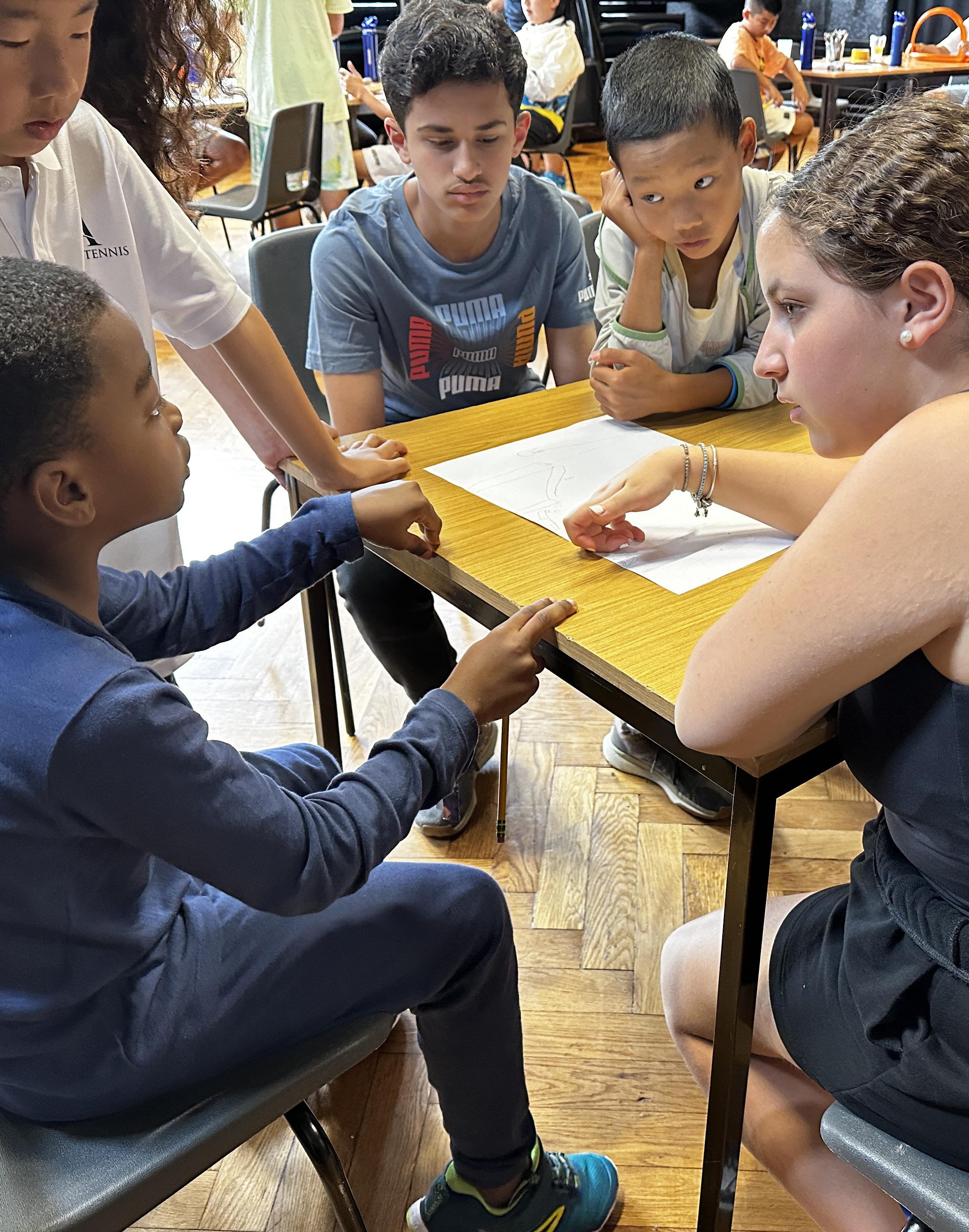
Collaborative publication on the sustainable development goals - WWW.SDGZINE.ORG
Special SDGzine edition with projects & work on the UN’s Sustainable Development Goals SPECIAL EDITION #SE8 AUG 2023 session 3
Summer Camp 2023
Inspiring Young Innovators: a Summer of Sustainable STEAM Projects
I am really pleased to share the achievements of our Summer STEAM Camp, powered by Addictlab. Celebrating the end of a really great summer, we proudly showcase the creative efforts of our young campers, guided by the principles of Sustainable Development Goals (SDG’s).

The spirit of innovation and creativity is blended with a deep commitment to sustainability. Our campers, were immersed in several diverse STEAM projects that addressed real-world challenges aligned with the SDG’s set forth by the United Nations. Each project was devised with the intention of creating a better world.
From crafting renewable energy prototypes
and designing eco-conscious architecture, to implementing technological solutions for waste reduction, our young minds demonstrated exceptional aptitude across the STEAM disciplines. It was impressive to see young people from all round the world come together and create solutions to global problems as a team.
My huge thanks and appreciation to Addictlab for the creativity in first turning our school into a STEAM lab, then running an exceptional program and then sharing this incredible magazine documenting the achievements. The expert mentors and cutting-edge resources inspired our young innovators which I hope will be for some of them the start of a bright future in a rapidly changing world.
I hope you enjoy looking through this magazine and witness young people working together to create a sustainable, brighter world through the lens of STEAM.
Warmest regards,
Duncan Robinson Summer Camps Director

SDG ZINE 2
STEAM: a journey of innovation and sustainability
As the St. George’s Summer Camp Assistant Director and the proud coordinator of the STEAM program for the past five years run by Addictlab, I am delighted to share with you the inspiring journey of innovation and sustainability that our campers embark upon each summer.
In today’s rapidly evolving world, nurturing young minds to become critical thinkers and problem solvers is essential. At St. George’s Summer Camp, we are committed to providing an exceptional learning environment that goes beyond the traditional classroom setting.
Our STEAM program, which focuses on science, technology, engineering, arts, and mathematics, embraces the values of out-ofthe-box learning, while working on projects like coding, robotics, 3D design and 3D printing, cyanotype, stop motion film making based on the Sustainable Development Goals and many more.
One of the core principles that we uphold is the significance of interdisciplinary problemsolving, while building environmental consciousness. By integrating sustainability into our curriculum, we aim to instill a sense of responsibility and care for our planet in the young minds of our future innovators.
Through hands-on projects and creative challenges, our students learn how to harness technology for positive change.
From designing and constructing robots to get plastic out of the ocean to creating engineering based constructions such as Ruby Goldberg machines, our young participants are empowered to develop solutions that address real-world challenges in sustainable ways.
It is our belief that STEAM education, when combined with a focus on sustainability, not only equips children with cutting-edge skills but also fosters a sense of purpose.
The impact of our STEAM program reaches far beyond the campgrounds. By encouraging our campers to think innovatively and sustainably, we are nurturing a generation of responsible global citizens who are passionate about making a difference. These young innovators are the driving force behind tomorrow’s advancements in renewable energy, waste reduction, environmental protection, and more.
I am proud to say that, over the years, our students have surprised us with their exceptional creativity and resourcefulness. They have developed innovative prototypes that have the potential to reshape industries, all while keeping sustainability at the core of their work.
As we look to the future, we are excited to continue our mission of nurturing young minds through the STEAM program at St. George’s Summer Camp, as we pave the way for a brighter, more innovative, and environmentally conscious tomorrow.
Alexia Athanasiadou Summer Camps Director Assistant
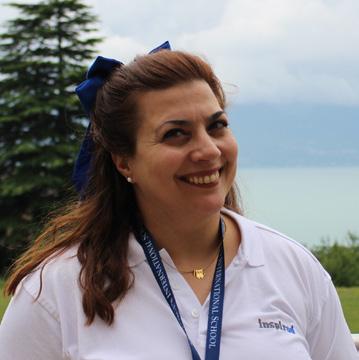
3
Turning the school into a lab.
The last 5 years Addictlab has been involved in organising and rolling out the STEAM activities at the St George’s International School during the Summer Camps in July and August. STEAM is Science, Technology, Engineering, Art and Mathematics, but I tend to believe we go beyond that. This year, we went another step further and I am very proud of the confidence we get from Duncan and his team.
Our SDGFabLab at the University of Geneva serves as a research center to build a holistic vision on education. The concept of mixing creative disciplines has been my field of interest for the last 26 years, combing art, fashion, design, technology, sustainability, engineering and more.
So we have turned the school into a lab, with over 10 locations with different disciplines and trained facilitators. The art room, the VR room, the computing lab, the WASTE lab, the robotics room, the chemistry lab: it’s all part of a plan to inspire and teach a lot of children from different cultures and backgrounds.
Organisation
How do you do this? We need a truly talented team. And an innovative lesson plan combining tradional tools and state of the art devices.
And boxes. Lots of boxes. Because behind this all is a modular and mobile creative lab concept: at Addictlab we now have about 150 boxes with different techniques, tools, machines and devices.
All of them tested, not just for one student but to be appropriate for bigger numbers. All is organised in a database, linked to another database of activities we can do with those tools, in line with the SDGs, the Sustainable Development Goals.
Documentation is key.
There is just no discussion: the Sustainable Development Goals need all our attention. We want your kids to be ambassadors for a sustainable future. That’s why our activities are in line with and based on the SDGs.
As part of our educational model, we create magazines. To document best practices, to highlight great ideas, to pass on knowledge. The SDGs have added an important navigation system both through addictlab’s lesson plans as through this SDGzine.
A remarkable editorial room.
The covid egg, a sitting object that has been installed in the school’s theater, serves as our editorial room. It’s a proof of digital fabrication we can do in a lab like ours. And it’s also a way to showcase the SDGzine to a larger audience.
Your children.
But it’s all about your kids, to be frankly. How can we accelerate their talent? How can we prepare them for the future, and let them build that future sustainably?
We bring so many different experiences and boxes, that I am sure that all kids will find something that triggers them personnally. That’s our Steam team’s mission.
I am very proud to present you this special edition of the SDGzine, as it’s proof of your kids talents. Sometimes their talent is clear, in full sight. Sometimes it’s hidden. Let’s make sure together it doesn’t stay unlocked.
Jan Van Mol Founder Addictlab publisher SDGzine

janvanmol@sdgzine.org
SDGZINE.ORG is an initiative from Jan Van Mol, the ADDICTLAB ACADEMY and partners contributing to the sustainable development goals of the United Nations.

Cover Image

picture by Mariana Espinel
Editorial board.
This magazine was created with the help of students from the 3 Summer Camp Sessions. They participated in writing, taking pictures, selecting art work.

SDG ZINE 4


5 contact info@sdgzine.org publisher Jan Van Mol ©LAB.002 sarl, 2021, 2022, 2023 All rights reserved LAB.002 sàrl SDG Solution Space Campus Biotech Innovation Park Avenue de Secheron 15 1202 Geneva Switzerland STEAM CORRIDOR #04 ROBOTICS R #05/ CODING C LEVEL
The Summer Camp team

Over 100 kids every two weeks. You can’t take on that challenge without a professional , talented and international team.

7
I am currently an Engi neering and Technology teacher in a high school in my home country of Ire land. I have been teaching for a decade to students in different countries of different abilities and backgrounds. My previous school was Chinese Interntional School Hong Kong, where I worked as a Product Design teacher. I build projects in my spare time such as an electric skateboard I made using bamboo wood and powered using direct drive motors.


I am a keen traveller and kayaker and have had the privilege of being able to travel to different parts of the planet.
Education. I am currently teaching Greek Language, Biology, Maths, and History in both Primary and High Schools in my home town, Athens.
My hobbies are literature, volleyball, theater and knitting.
where I have been in 5 Erasmus Projects, studied in 2 countries and been a volunteer in 2 organizations.

My hobbies are travelling, doing calisthenics & sports and hanging out.
Constantly involved with Addictlab and SDGzine related projects. Passionate about cuisine and wine. Autodidactic artist and crafter.
SDG ZINE 8
Donagh Murphy
to make learning not only useful, but also enjoyable and interesting. I’ve been teaching law at the university for many years. And I’m a PhD in law.


Also I fond of dancing all my life. And now I’m a teacher of dance in Lausanne.
I am an enthusiastic person and I like it when I can captivate others
Academic background in MPA at Australian National University and Sustainability Studies at University of Geneva, with keen interest in policy evaluation and sustainable development agenda. I currently work at an UN agency targeting poverty eradication and food security. With St. George summer camp, it was a great pleasure to engage the young and talented generation in taking action along the journey to a better future.

9
Mariana Espinel
Camp photographer
Profiling: We know what we teach, but do we know who we raise?
The Creative Chemistry Table was created 26 years ago by Jan Van Mol when he founded Ad!dict Creative Lab. The aim is to merge creative disciplines, to be inspired by other fields and cultures, and obtain more depth in the creation process.
Through the years leading up til now, Ad!dict Creative Lab or short addictlab, has conducted a large amount of brainstorming sessions, published over 35 books or magazines, and set up ideation processes for companies and organisations from Thalys trains, Lexus, Diesel, the chocolate and design industries, to governments and cities as well as institutions such as the University of Geneva.
Today, the Creative Chemistry table consists of 145 disciplines or human ‘capabilities’, 76 character cards, the 17 sustainable development goals and more. This card set is a concrete package from a proven methodology to allow groups of people and individuals to think out of the box. It’s a unique tool for collective intelligence.
All students of the Summer Camp use these cards to profile themselves. What do they like? How do they see their future? What is important to them personally?
3 boxes.
1. Creative Chemistry cards. About 145 creative disciplines. Divided into 14 categories, these are fields where we can be creative in. From photography to medicine, from tattoo to government. Categories go from Public Sphere, over Communication to Critical Thinking.
2. Character & profiling cards. About 50 character cards based on the IB profile (International Baccalaureat). Cards on a person’s character and learner. ‘I am curious’, ‘I like to share’ and more.

3. Sustainable Development Goals cards. The 17 Sustainable Development Goals as defined by the United Nations for 2030. We added 3 cards for an easy visualisation of the impact you create while designing or having ideas: how will your idea create a positive or negative impact on each of the 17 SDGs? And how can you adapt that idea?

More cards.
Emotion cards.
8 basic emotions cards. Evident to use for personal profiling , but also because our ideas or ideation capabilities will be influenced by current, past or future emotions.
Gender cards.
To allow diverse gender profiling we added ‘male’, ‘female’ and ‘other’ genders.
Senses.
5 senses cards adding all 5 senses for future use.
IP Cards.
Currently, the Addictlab Academy is joining forces with WIPO (world intelectual property organisation) to add IP protection, patents and help to protect your ideas to the card set.
SDG ZINE 10




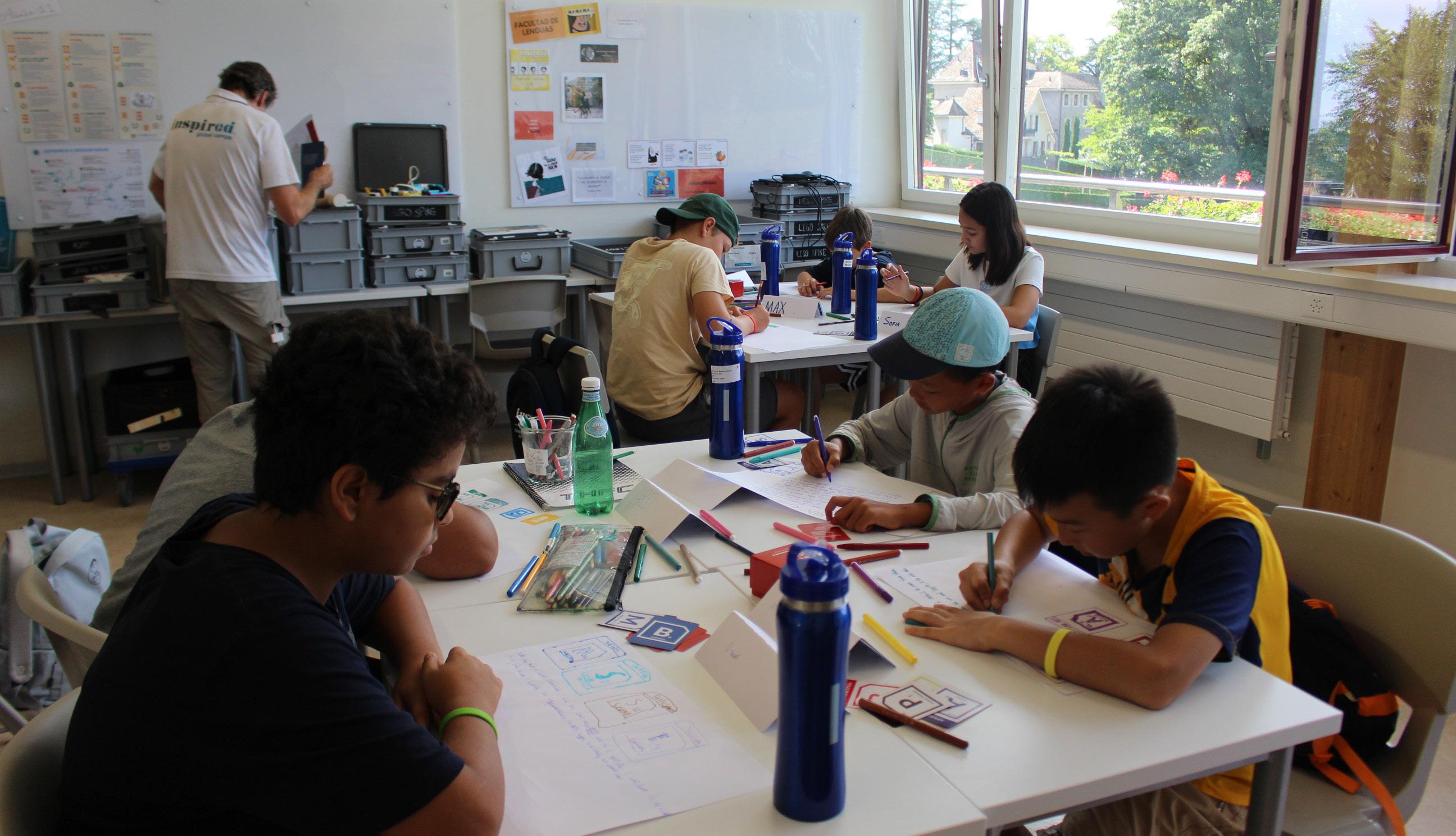
SDG ZINE 12
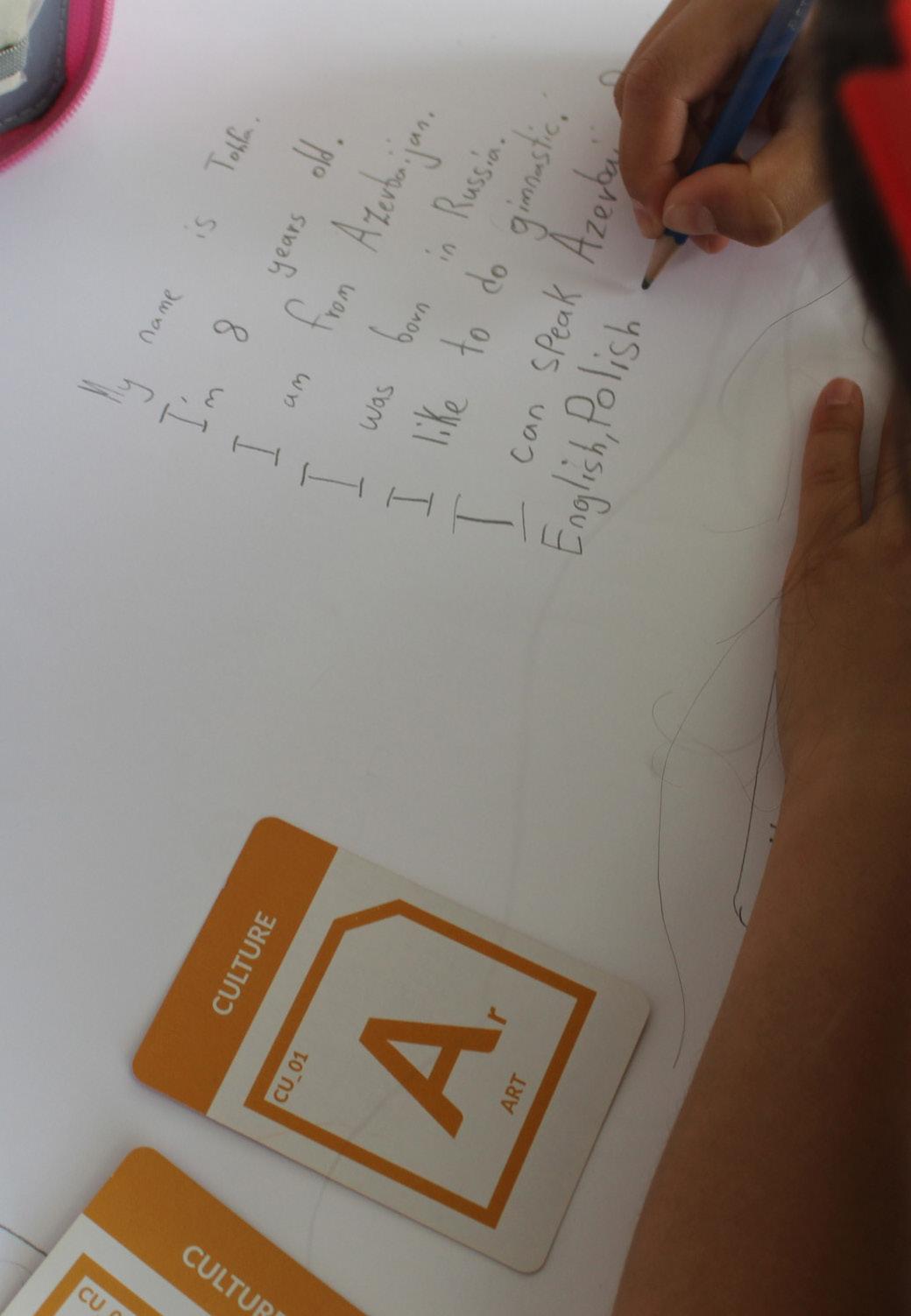
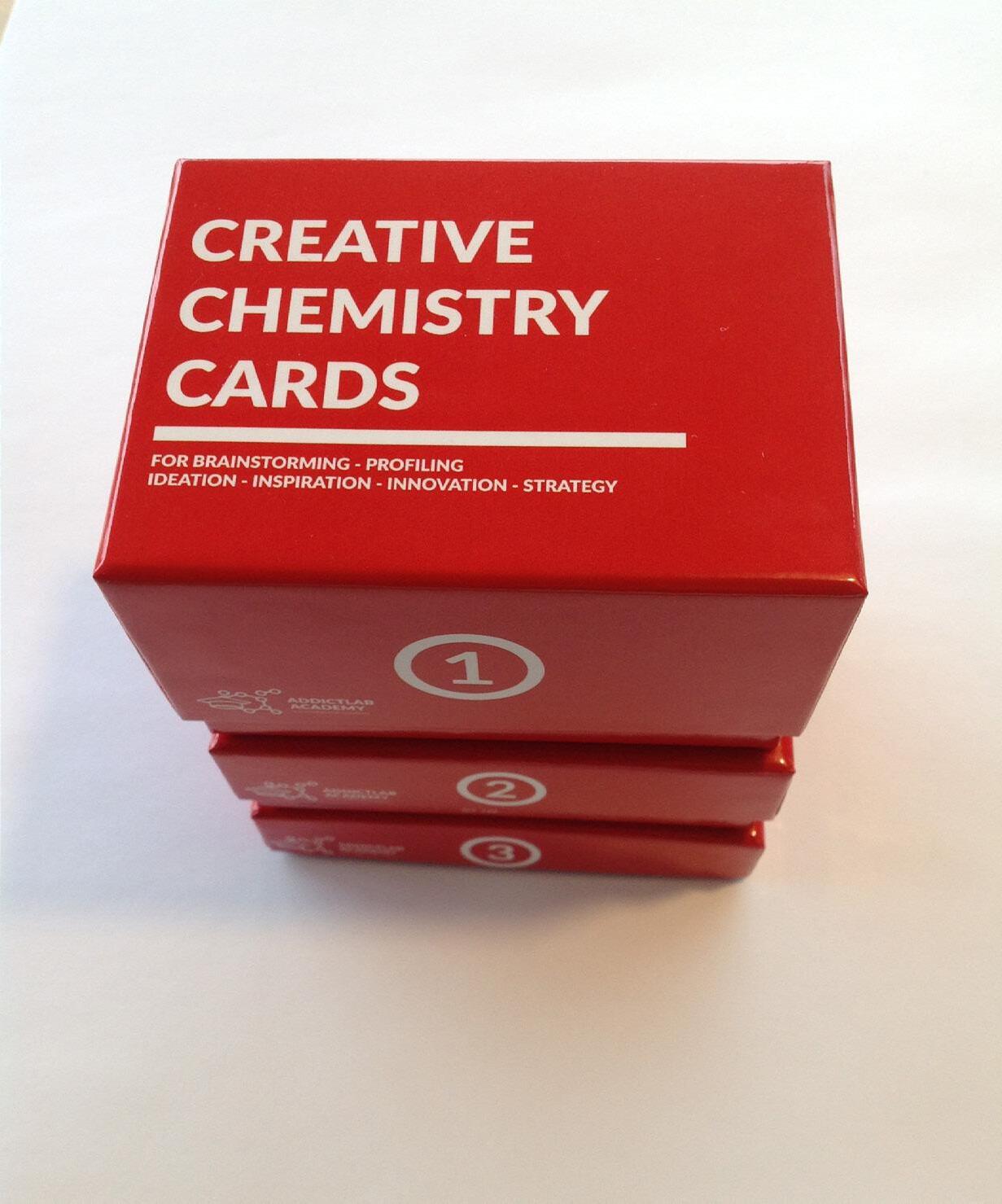

13


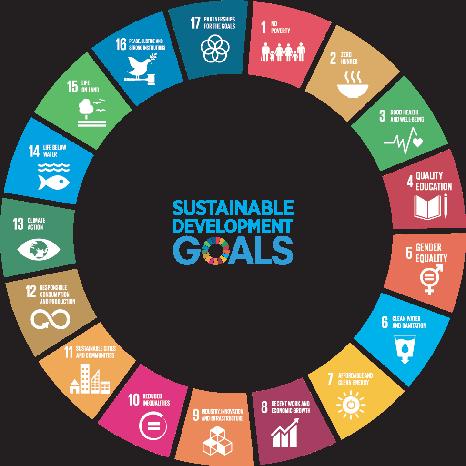
SDG ZINE 14 SDGZINE GROUND LEVEL STEAM CORRIDOR #01 / ART ROOM CU_01 A #02/ LEVEL 1 LANGUAGE CORRIDOR #01 / ART ROOM ART A #02/ 3D PRINTING TE_02 3 #03 / VR ROOM TE_09 V #04 / ROBOTICS 1 R #05 / CODING TE_09 C SDGZINE #06/ MAKER SPACE TE_06 Mk #07 / LAB NA_01 N a #08 / WASTE LAB CT_06 S dg #09 / COMPUTING AA_11 G a
15 LEVEL -1 ART ROOM -1 #07 / LAB NA_01 N #06/ MAKER SPACE Mk #02/ 3D PRINTING TE_02 3 #03 / VR ROOM TE_09 V #04 / ROBOTICS TE_08 ROBOTICS R o #05/ CODING CODING C o LEVEL 0 LEVEL 1 LEVEL 2 LEVEL 1 LEVEL 0 LEVEL -1 LEVEL 3 #08 / WASTE LAB S dg #09 / COMPUTING AA_11 G a
Book binding.
Documentation is key. We want students to learn to draw.. not just for the art sake of it, but also to document and share their ideas. Sketching is an important step in that. ideation process.

So what’s the first lab activity: learn to use the ancient technique of book binding, for each kid to create her or his own sketch book.
1. Material Prep
The first, and easiest step in the book binding process is the titular material prep. Every student selected a minimum of four coloured pieces of A4 paper, which would be folded in half to make a total of 8 pages in the book, Then, these pages
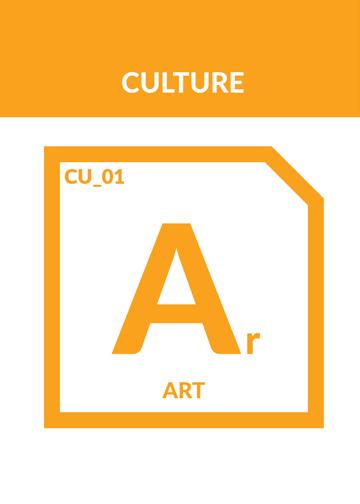
would be aligned with the edge of a piece of A3 card, and secured in place with a binder clip. And so, the notebooks were ready for the next step.
2. Needlework

This step was the most difficult for the vast majority of students because of the nature of it. Still, students persevered. To bind a book’s pages to its cover, three holes are poked through the cover and pages, held by a binder clip for alignment. One in the middle, and two more 5cm above and below. Then, students would thread their needle through all three holes with a back stitch, then tie a double knot to ensure the integrity of their project.
3. Success
Throughout the rest of the camp, students used their own creations to record valuable reflections on classes, helping them to better their STEAM abilities and to recognise their areas that require improvement.
SDG ZINE 16

17




SDG ZINE 18
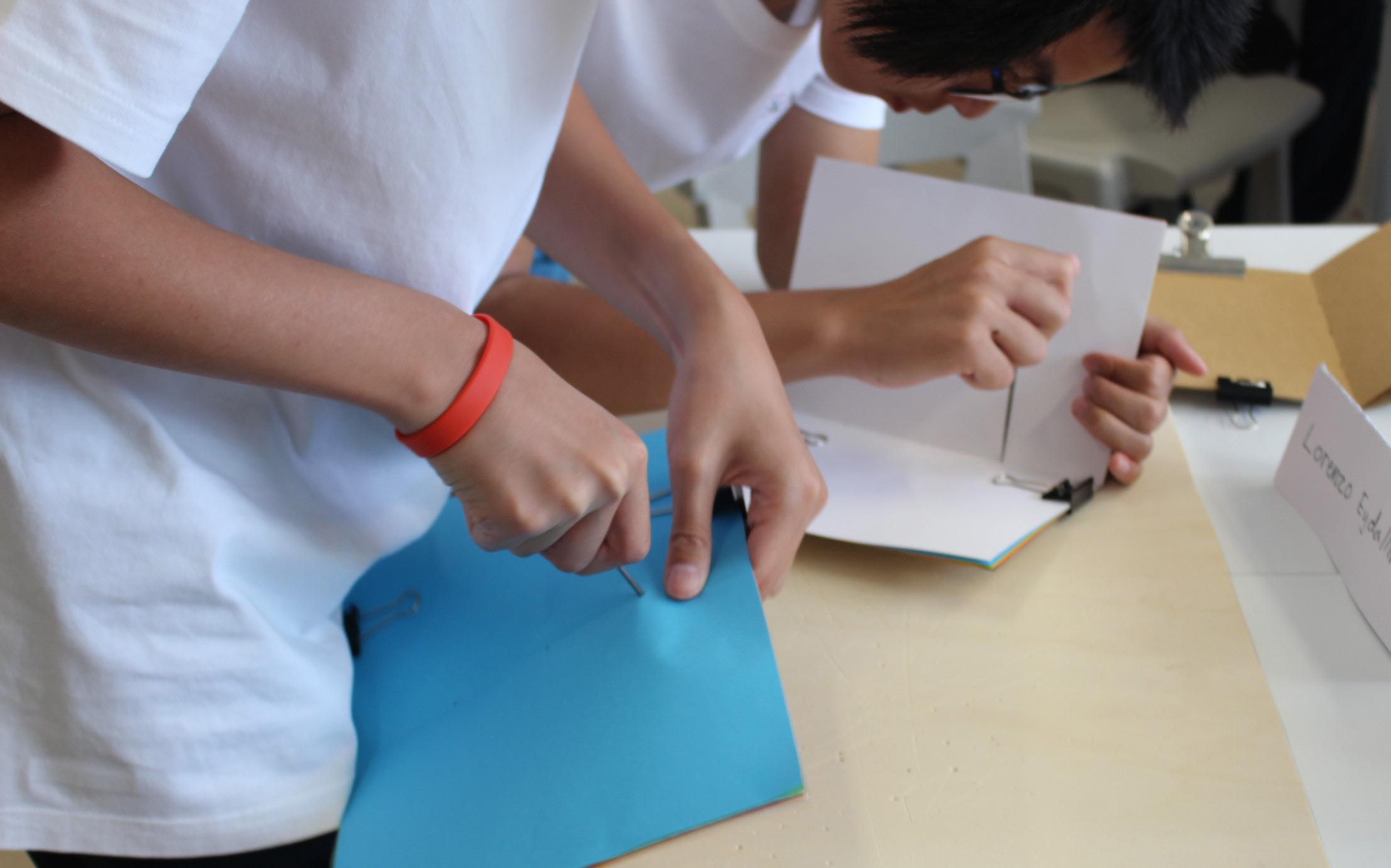
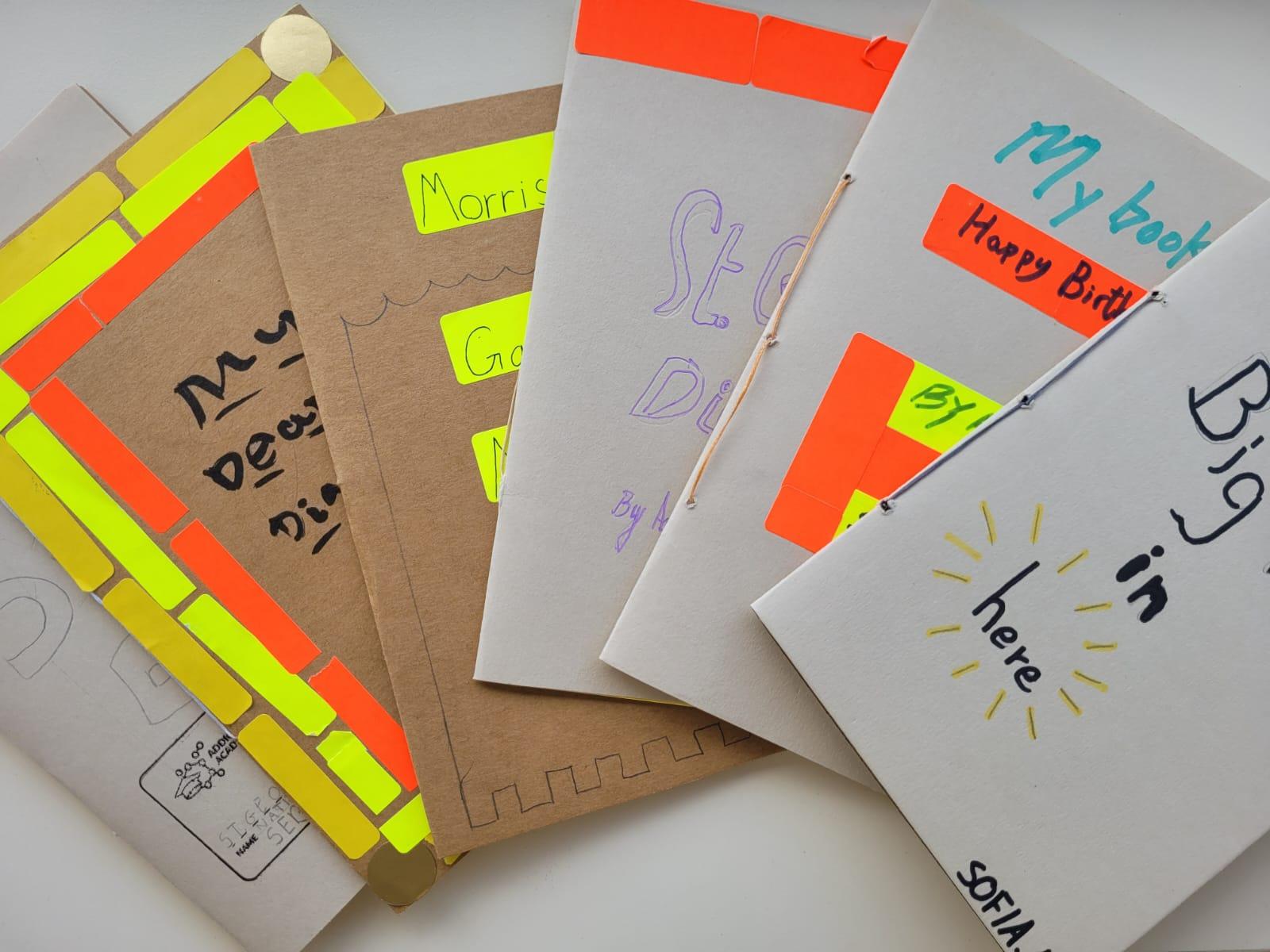
The Art Room

3Doodler.
One of the surprising but highly popular and tools are the 3D pens.


These pens use PLA (biodegradable corn based) and fit the plastic free campus concept. They are also part of Addictlab’s workshop ‘drawing in 21st century’ as it’s the stepping stone between conservative drawing and sketching, and the virtual reality world.
Addictlab uses these pens to let kids create in 3 dimensions, just as the 3D printing machines do, but in ‘free hand’.
Also, we learned that these pens were captivating for kids with ADHD and autism. Because of this, these tools have become an incredibly important teaching tool and introduction to 3D printing in our inclusive lab.
The speed of the drawing, for example, is not controlled by the student, but by the motor of the tool, creating a mesmerising experience.

SDG ZINE 20
SDGZINE STEAM CORRIDOR ART ROOM -1 #07 LAB N #06/ MAKER SPACE M #01 ART ROOM A 3 #03 VR ROOM V #04 / ROBOTICS R #05/ CODING C LEVEL 1 LANGUAGE CORRIDOR LEVEL 1 A #02/ 3D PRINTING 3 #03 / VR ROOM V #04 ROBOTICS 1 R C SDGZINE LEVEL 0 LEVEL 3 S #09 COMPUTING G #06/ MAKER SPACE M #07 / LAB N #08 / WASTE LAB S G
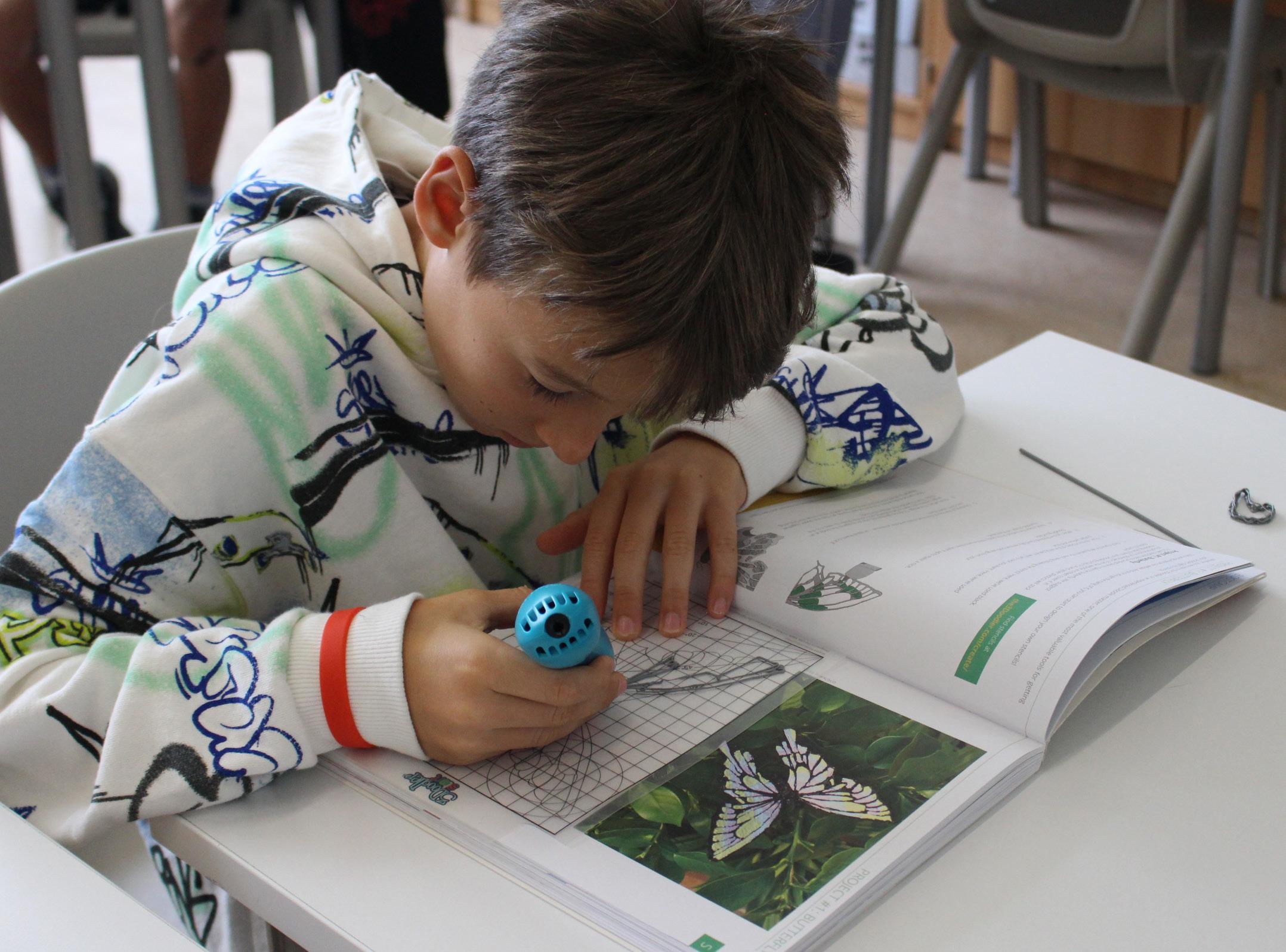

21

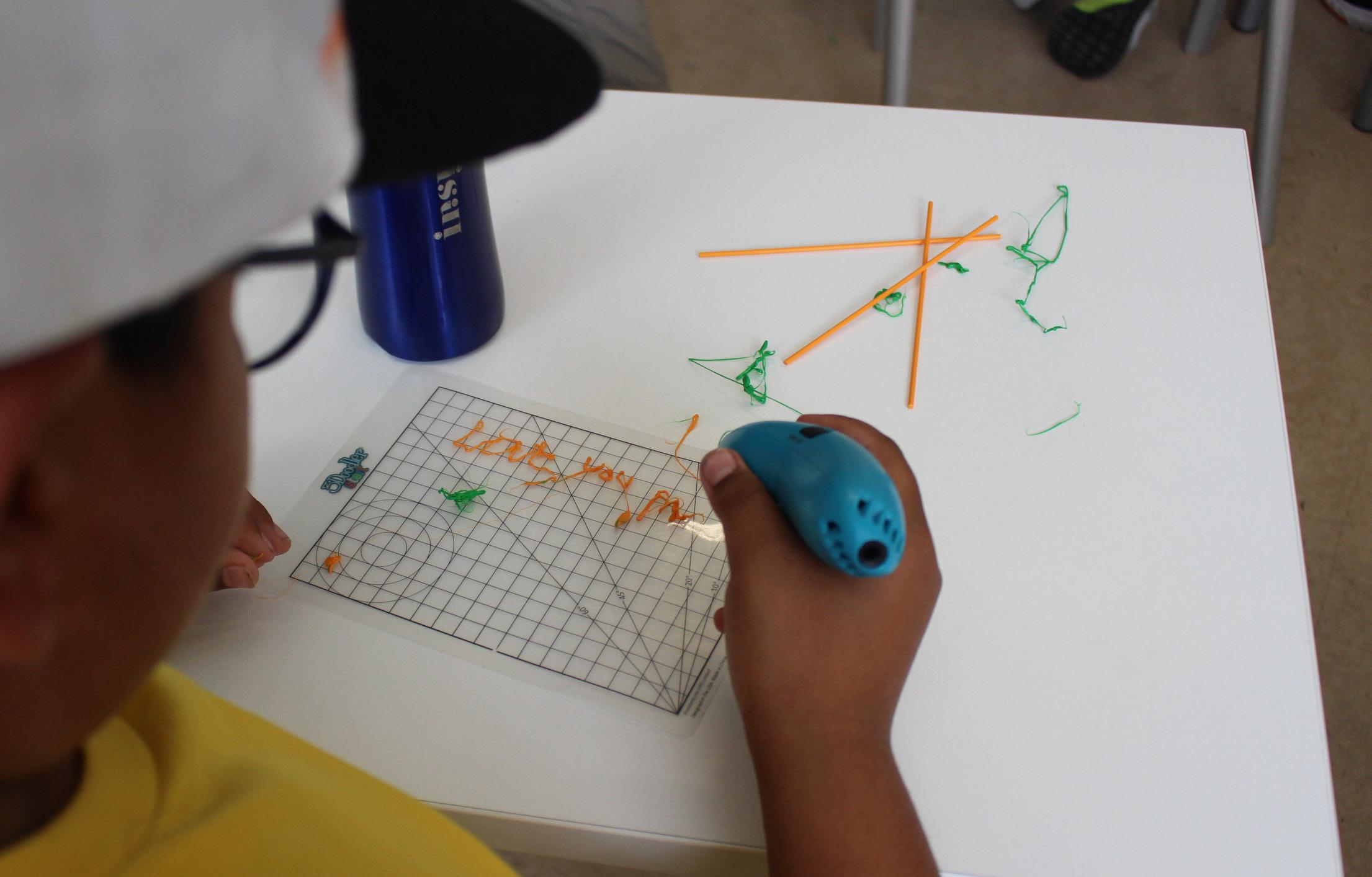
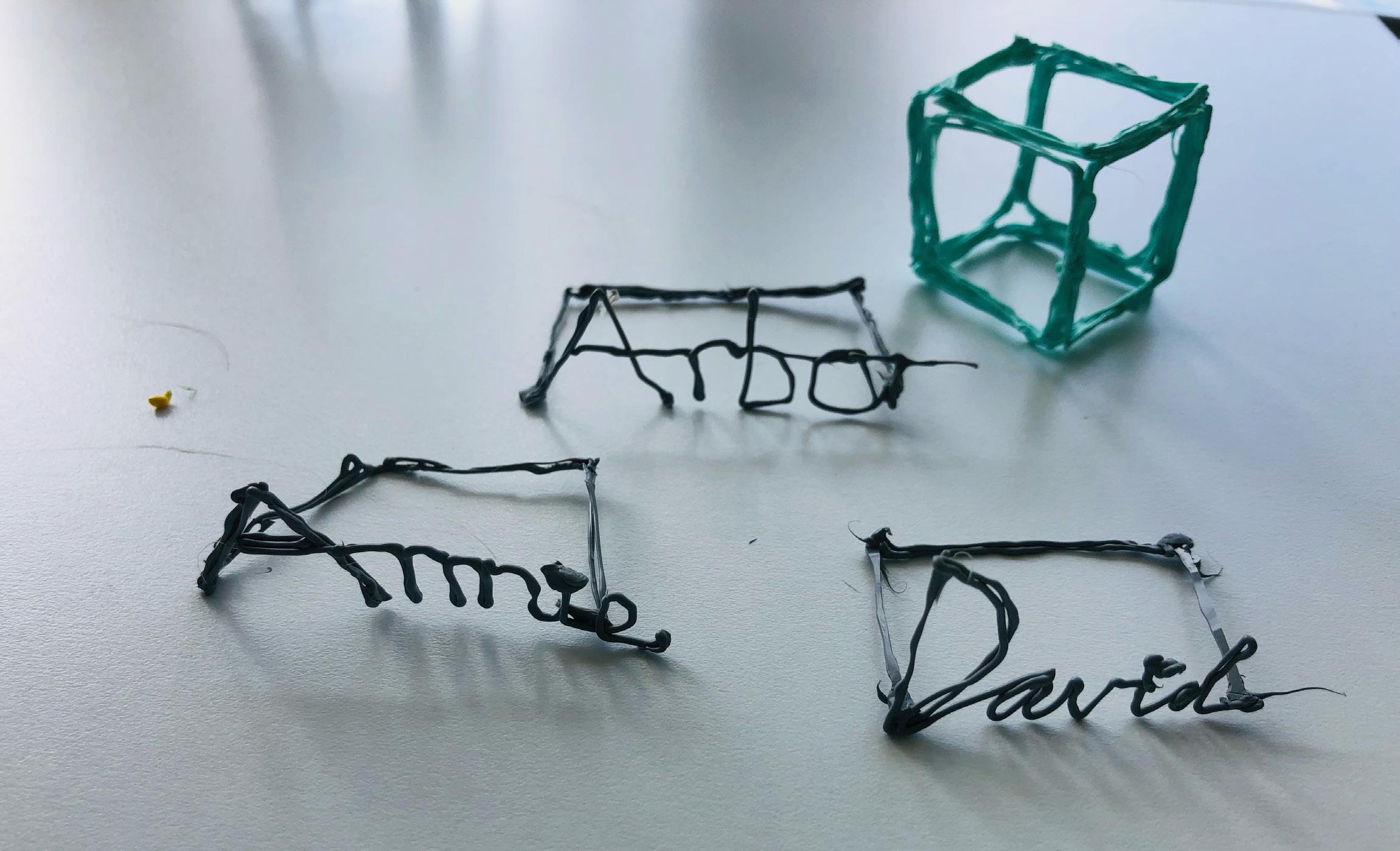
SDG ZINE 22

23
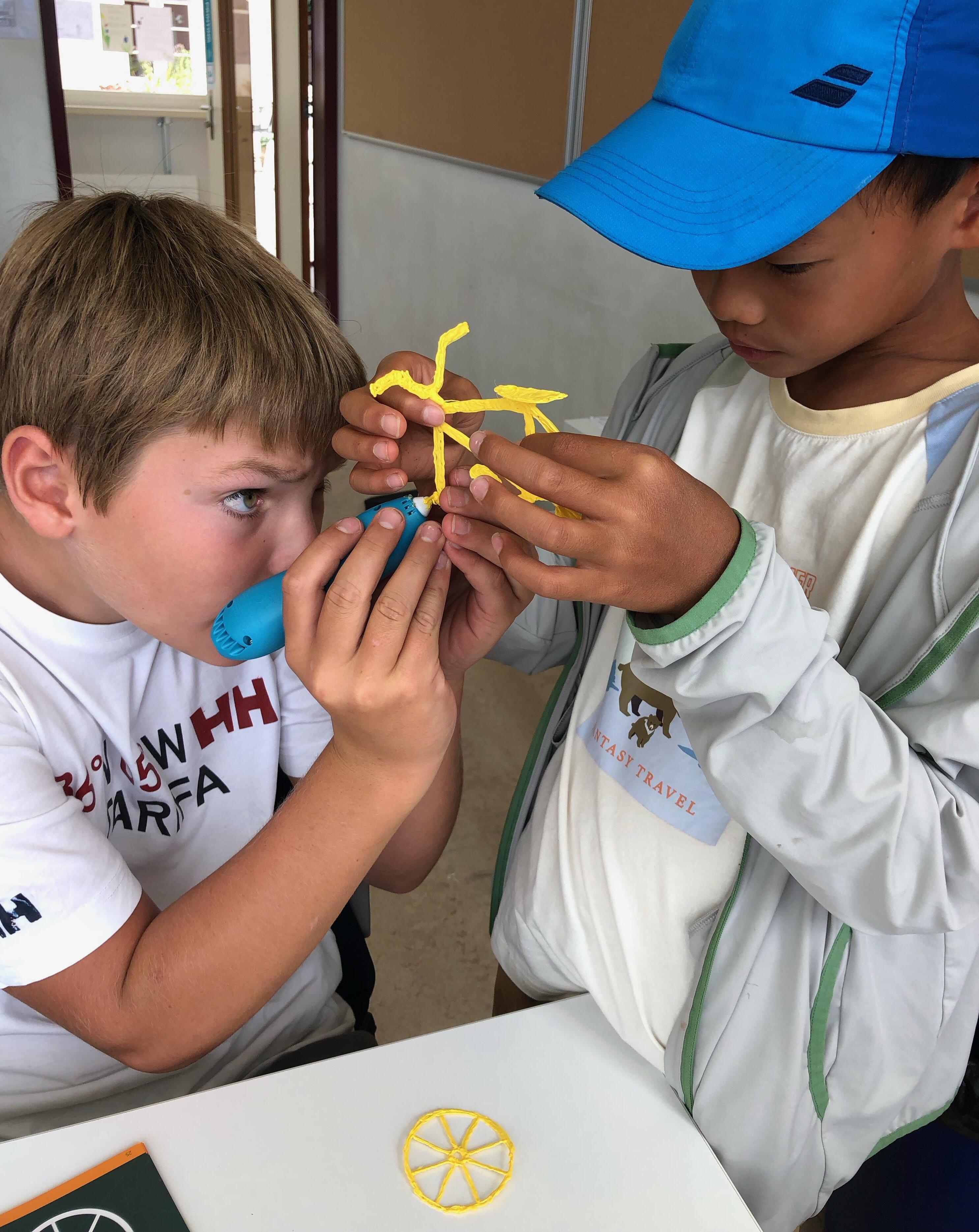
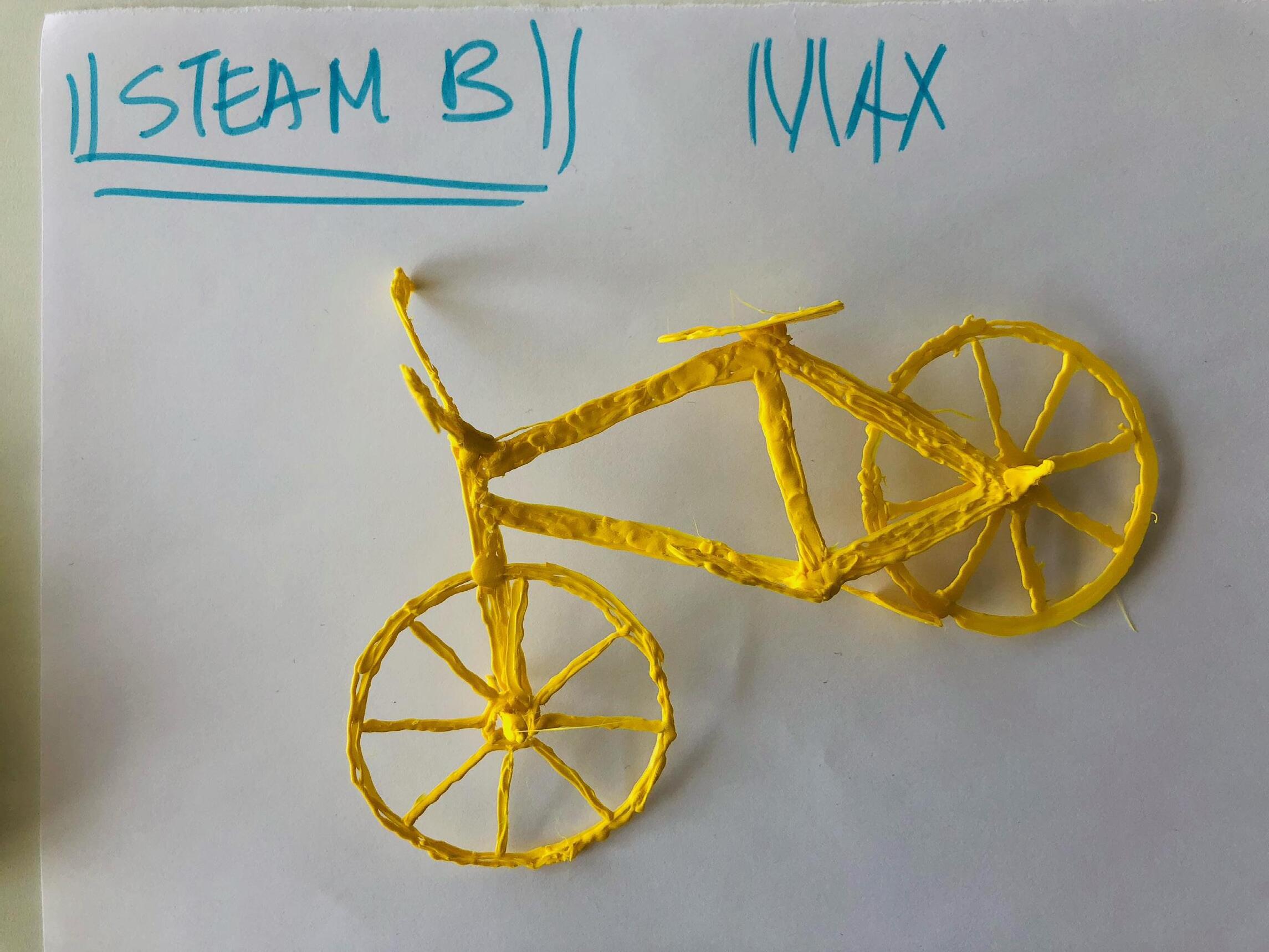

25
Lavender Weaving
Bringing the lab outside and the outside into the lab. The Addictlab Outdoor Academy adds an important ecological aspect to our lab, and respect to nature. In this case, students harvested the school’s lavender to turn into a nice smelling wand that will make your house smell of the French provence or Swiss Riviera for years to come.
What you need:
freshly picked lavender stems (13 for the wand shown in this picture.
• - 6mm ribbon x 1.5mm
• - thread or tiny elastic band

• - scissors
Note: For these lavender wand instructions, you need an odd number of stems to achieve the alternating weave pattern.

Instructions:
1. Strip all the leaves from the stem.
2. Line up the bottom of the flower heads and tie them together. You can use tiny clear hair band or thread works too.
3. Tie the ribbon over the thread/band. leaving a short tail of about 30 cm long at one end of the ribbon and the rest on the other.
4. Next, create a cage. Turn the bundle upside holding the flowers in your hand and pinch the bunch where its tied.
5. Gentle bend each stem down around the blossom heads. Score the underside of the stem section that is being bent with your fingernail to avoid snapping.
6. When all of the blossoms are encapsulated by the stems, pull out the long end of the ribbon, leaving the short tail tucked inside.
7. Start weaving the ribbon under and over the stems. Gently pull on the ribbon to make sure weave is tight. Most challenging part of this process is the first two rows of weaving. On the second row, you should be going UNDER the stems that you had gone OVER on the first row.
8. Continue weaving until you have covered all the flowers. Use toothpick to push buds that stick out if necessary. Wrap the ribbon around the neck of the wand and tie it off.
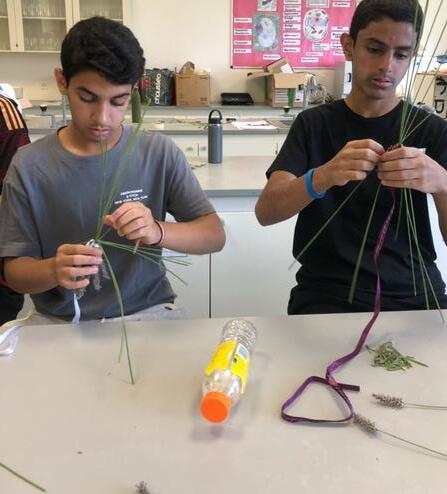
9. Finally trim stems to the same length.
Notes:
Harvest lavender in the morning once any dew has dried. Aim to harvest stems that are at least 30cm long. Lavender wands can last for many years. As fragrance fades, squeeze or rub the baton in your palms to release more scent.

SDG ZINE 26

27
Sand Art
Students created beautiful multicoloured sand art during these two weeks. Sand art uses a template of sticky paper with different sections, like a colouring book. The Sand comes from South Africa.
To make the art, different sections of the sticky paper are exposed for coloured sand to stick on, creating areas with different colours until the artwork is finished.

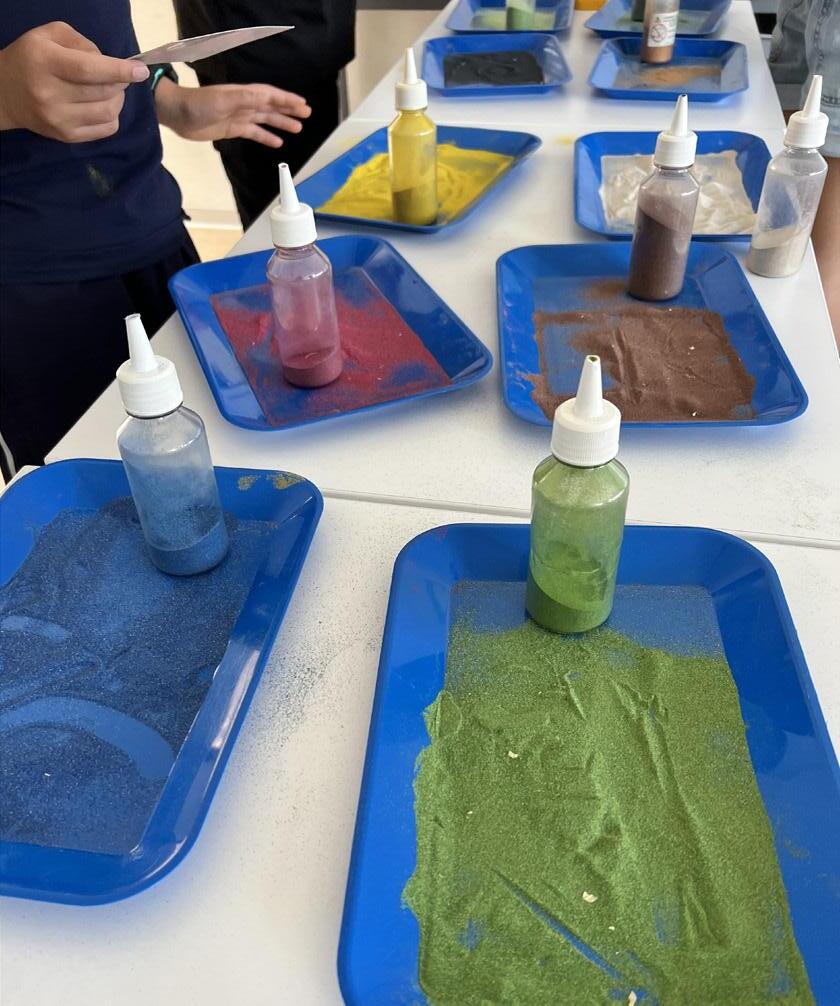

Designs available to students included an owl, a robot, a fairy, a dragon and more. This was one of the most enjoyed activities of the entire STEAM curriculum for the younger ones.

SDG ZINE 28

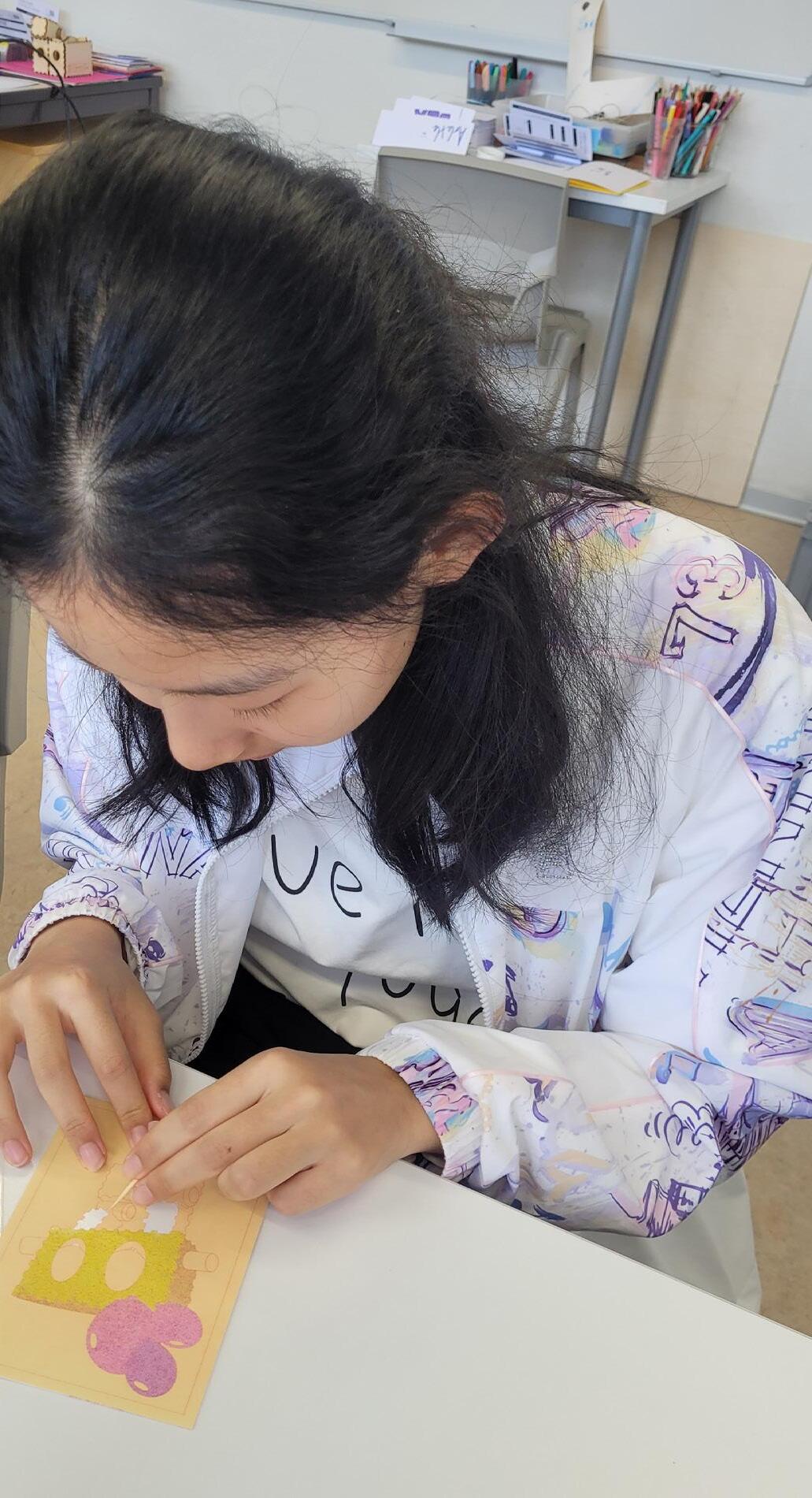
29
The Lab
Cyanotype
Cyanotype (from Ancient Greek κυάνεος - kuáneos, “dark blue” + τύπος - túpos, “mark, impression, type”) is a slowreacting, economical photographic printing formulation sensitive to a limited near ultraviolet and blue light spectrum, the range 300 nm to 400 nm known as UVA radiation.
It produces a cyan-blue print used for art as monochrome imagery applicable on a range of supports, and for reprography in the form of blueprints. For any purpose, the process usually uses two chemicals: ferric ammonium citrate or ferric ammonium oxalate, and potassium ferricyanide, and only water to develop and fix. Announced in 1842, it is still in use.


Students of the Summer camp first prepare the solution and create a canvas. Next, they draw.

The drawing is then copied on a transparant film with black markers.
The drawing is then fixed on the dried canvas. This all happens inside, away from the sun and UV.
Next step: go outside and expose canvas and drawing to the sun. The time of exposure can vary depending on the season, clouds, weather, time of the day. There is testing to be done.
To finish the exposure, all papers need to be washed under running water.
SDG ZINE 30
SDGZINE GROUND LEVEL STEAM CORRIDOR ART ROOM -1 #07 LAB N #06/ MAKER SPACE M #01 / ART ROOM A 3 #03 VR ROOM V R #05/ CODING C LEVEL 1 LEVEL 1 A #02/ 3D PRINTING 3 #03 / VR ROOM V #04 ROBOTICS 1 R C SDGZINE LEVEL 0 LEVEL 3 S #09 COMPUTING G #06/ MAKER SPACE M #07 LAB N #08 WASTE LAB S G

31


SDG ZINE 32




33

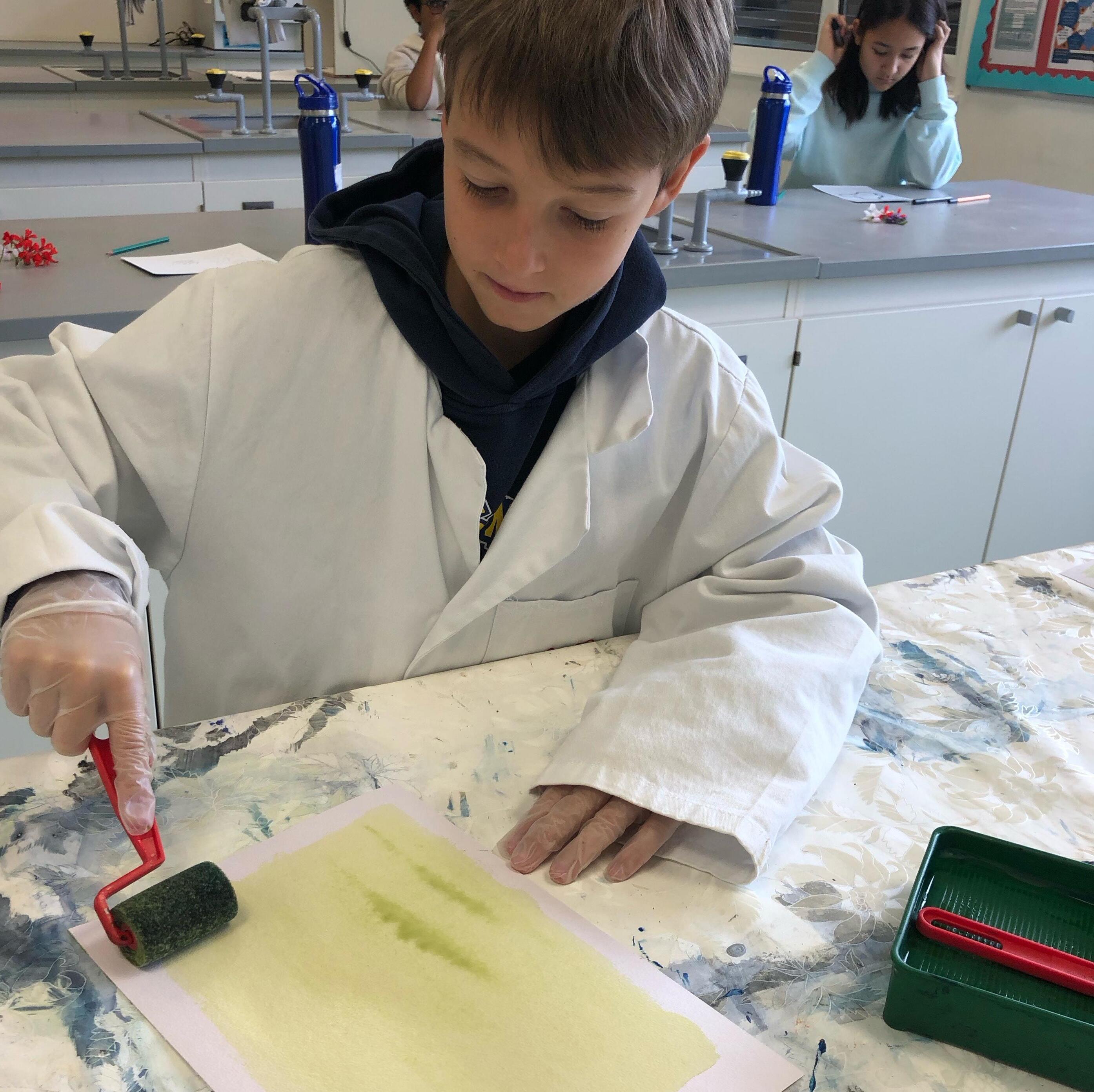
SDG ZINE 34
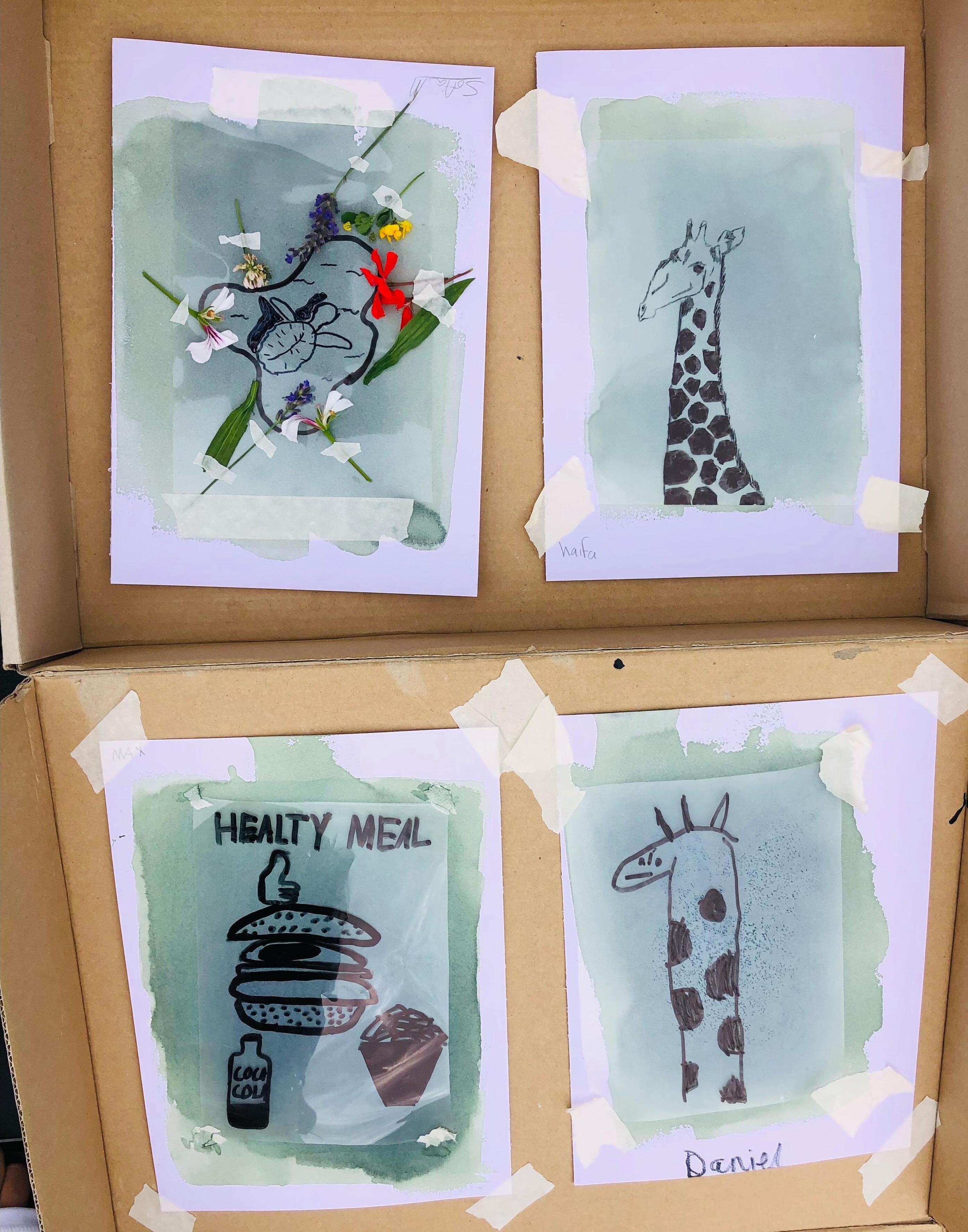
35


SDG ZINE 36


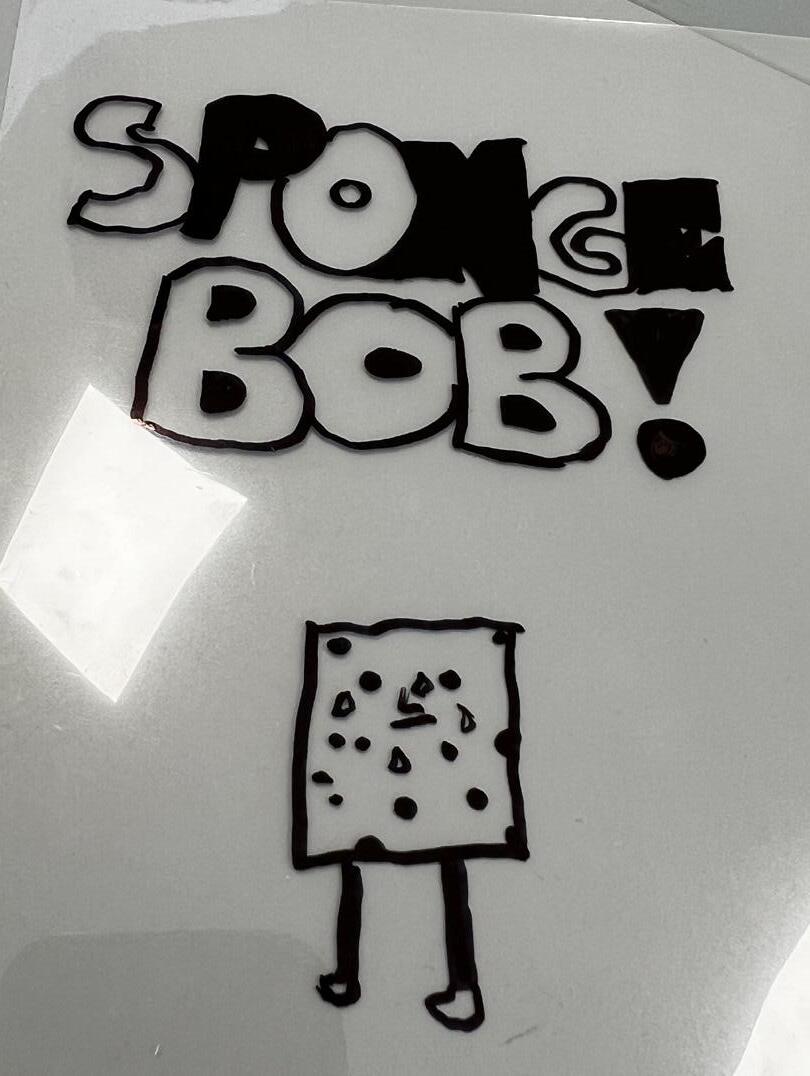
37
The Makerspace
A fab lab (fabrication laboratory) is a smallscale workshop offering (personal) digital fabrication.

A fab lab is typically equipped with an array of flexible computer-controlled tools that cover several different length scales and various materials, with the aim to make “almost anything”. This includes technologyenabled products generally perceived as limited to mass production.
While fab labs have yet to compete with mass production and its associated economies of scale in fabricating widely distributed products, they have already shown the potential to empower individuals to create smart devices for themselves. These devices can be tailored to local or personal needs in ways that are not practical or economical using mass production.
The fab lab movement is closely aligned with the DIY movement, open-source hardware, maker culture, and the free
and open-source movement, and shares philosophy as well as technology with them.

During the Summer Camp, Addictlab turned the schools dance room into a maker space, and brought in machines and tools that are used in FabLabs all over the world.
The makerspace contains a laser cutter, vinyl cutter, soldering stations, hands on tools to allow smal scale devices, and prototyping.
It is also a place where our students from very young will learn to use an electric saw, screw drivers, and even soldering.

SDG ZINE 38 STEAM CORRIDOR ART ROOM -1 #07 LAB N M #01 ART ROOM A #02/ 3D PRINTING 3 #03 VR ROOM V #04 / ROBOTICS R #05/ CODING C LANGUAGE CORRIDOR LEVEL LEVEL 1 LEVEL 2 #01 ART ROOM A #02/ 3D PRINTING 3 #03 / VR ROOM V R #05 CODING C LEVEL LEVEL 0 LEVEL 3 #08 WASTE LAB S G #06/ MAKER SPACE M #07 / LAB N S #09 COMPUTING G


39
Makerspace Projects: Rube MachinesGoldberg
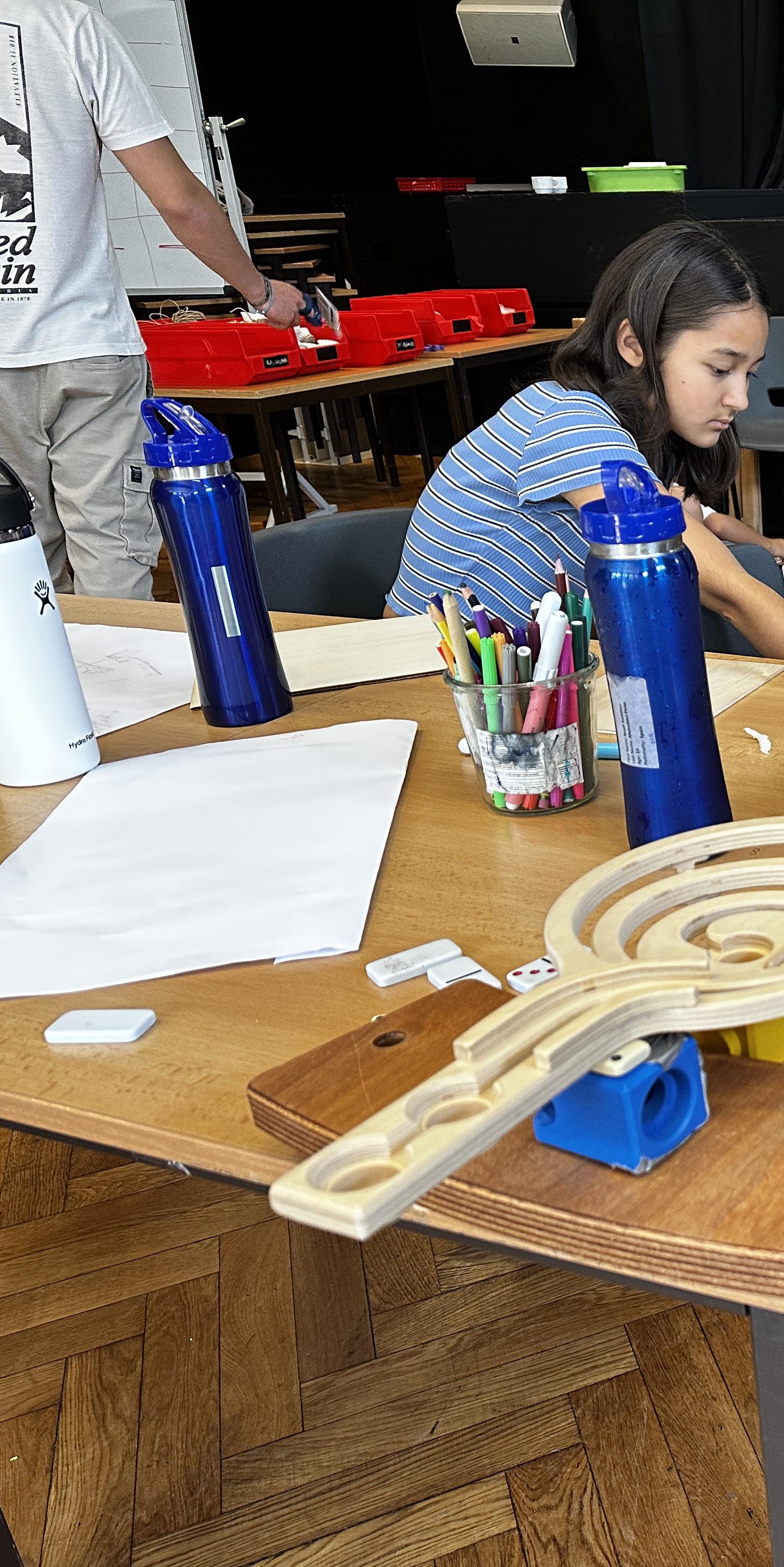
A Rube Goldberg machine, named after American cartoonist Rube Goldberg, is a chain reaction–type machine or contraption intentionally designed to perform a simple task in an indirect and (impractically) overly complicated way. Usually, these machines consist of a series of simple unrelated devices; the action of each triggers the initiation of the next, eventually resulting in achieving a stated goal.
The design of such a “machine” is often presented on paper and would be impossible to implement in actuality. But that’s the challenge.
Addictlab ‘s Rube Goldberg boxes contain a tremendous amount of material. Recycled fabric, recycled wood, recycled cardboard, but also cars, marbles, balls, wood, cords, tape etc.
We implement this activity for a number of reasons.
• Collaboration: kids need to work together and agree on the techniques used.

• science and physics : research on power, friction, speed, potential and kinetic energy.
• Creativity and out of the box thinking

• Work with frustration: test, test.
• Fun. Because it’s seriously fun.
SDG ZINE 40

41


SDG ZINE 42

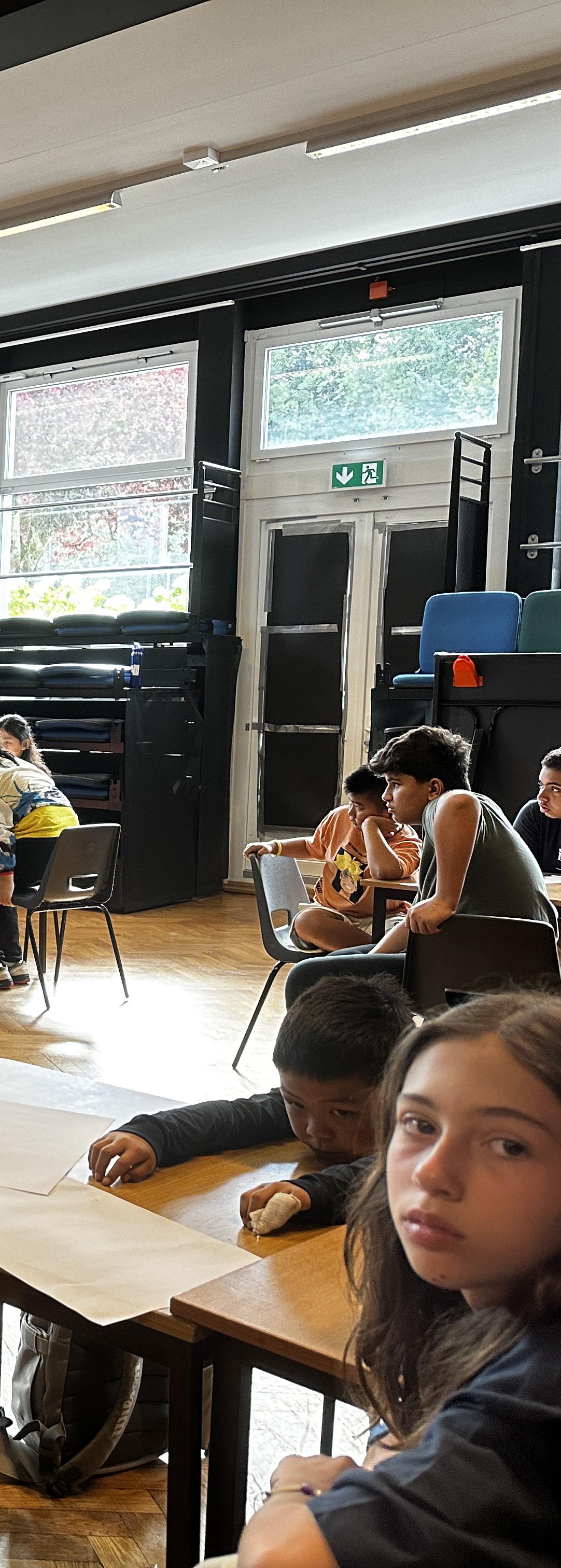

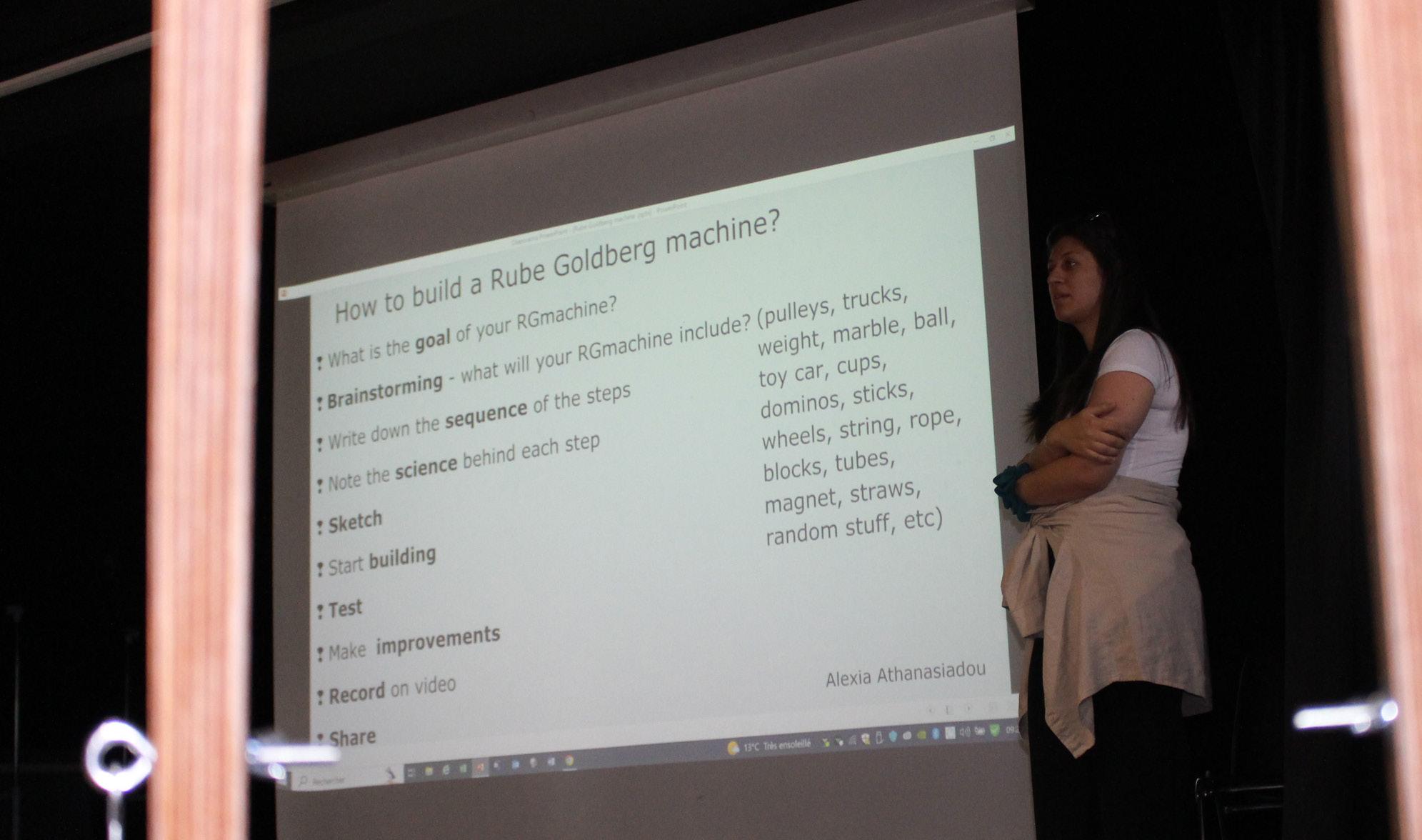
43
Makerspace Projects: Reverse Engineering


How do things work? What better way than to have a look inside!
Screwdrivers, pliers, scissors, protective goggles and more are made available while students work together to take devices appart. From broken computers, keyboards to toasters, hifi, it all is an inspiring discovery of techniques, old and new.

This activity is only recommended to do with a trained facilitator, as students tend to be overenthousiast and break things apart.

After the disassembly, for better understanding, all pieces are put in order to create an ‘exploded view’.

SDG ZINE 44

robotics scribbling machines
Our initiation to robotics always starts with this fun activity. Because we do have nice robots, but most of the time we can’t see what’s inside. So how are we supposed to learn to code, without a clear understanding of all elements?


The scribbling machines combine a number of disciplines, and building them sends out a clear sustainability message as well.
Next is learning about electric circuits. How do motors work? This is most of the times combined with the Makey Makey Piano demonstration.
A glue gun stick is then fixed to the motor, but not central, to make the robot instable. This way, the robot will be unbalanced and will turn around on his axe, drawing - or shall we say ‘scribble’ on a piece of paper. It

47

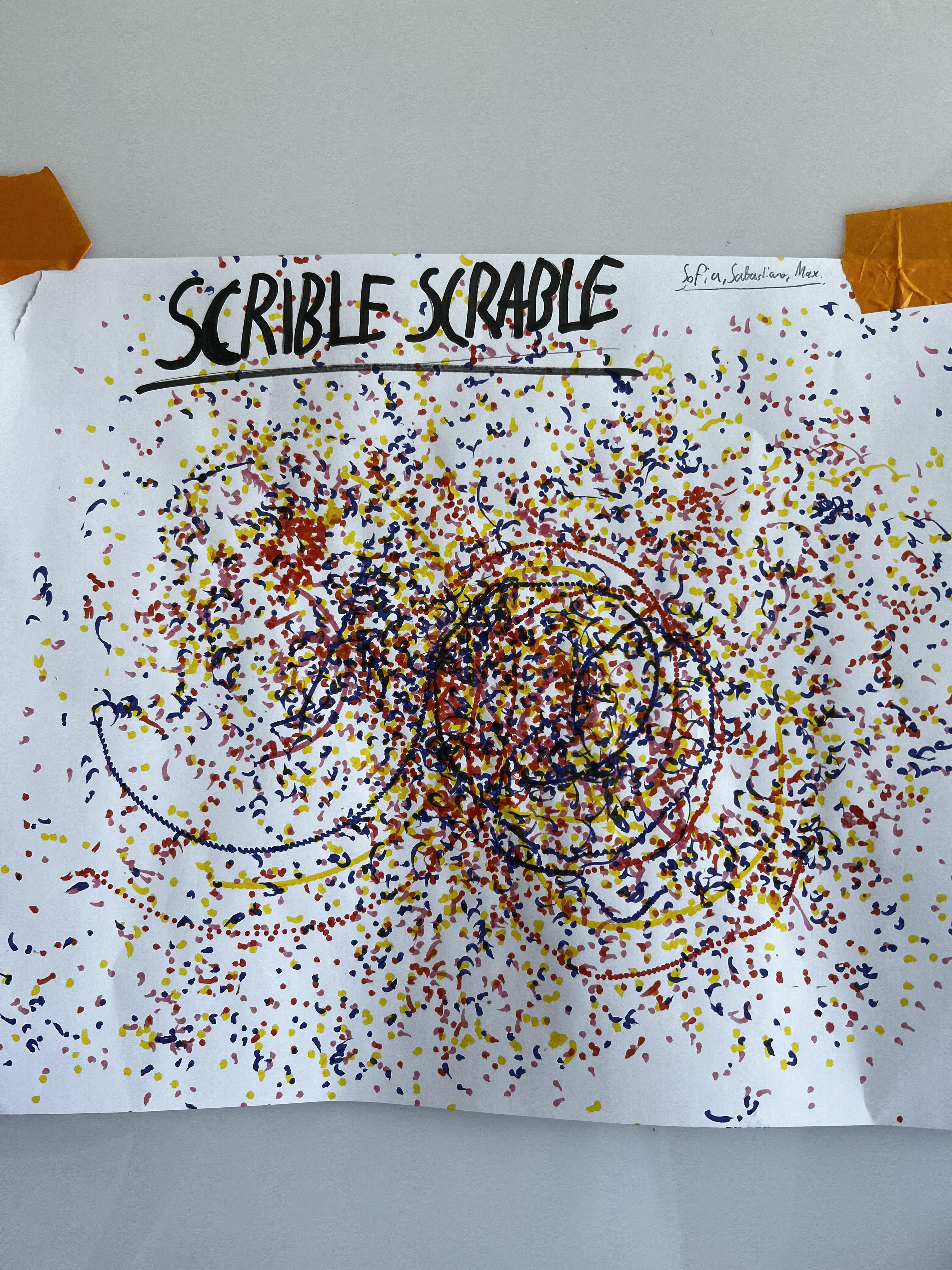
SDG ZINE 48

49


SDG ZINE 50

51
Steady hand game
This game is a lesson combining diverse skills needed. The goal is simple: move your device around a metal wire. Touch it, and a buzzer goes off.

It’s basically an electric circuit to construct, but it also involves learning how to strip wire, measure, bend metal, saw and drill.

The older students use soldering as a technique to connect the wires. The young ones are going through their first screw driver experience.


There is room for customising as students can decorate their very own Steady Hands Game.

SDG ZINE 52


53
The 3D Printing Room
Tinkercad & Snapmaker

The 3D print room contains a number of tools to draw and create in 3 dimensions.

Lessons in tinkercad, a free intiuitive software to draw in 3D from scratch, or scanning with devices to have 3D shapes.

The designs then are sent to the 3D printer.
First challenge to all is to design their own name tag. Next steps can be the reparation of pieces to reproduce, a chess game or other objects that inspire your children.
SDG ZINE 54
SDGZINE STEAM CORRIDOR ART ROOM -1 #07 LAB N #06/ MAKER SPACE M #01 ART ROOM A 3 #03 VR ROOM V #04 / ROBOTICS R #05/ CODING C LEVEL 1 LANGUAGE CORRIDOR LEVEL 1 A #02/ 3D PRINTING 3 #03 / VR ROOM V #04 ROBOTICS 1 R C SDGZINE LEVEL 0 LEVEL 3 S #09 COMPUTING G #06/ MAKER SPACE M #07 / LAB N #08 / WASTE LAB S G




SDG ZINE 56

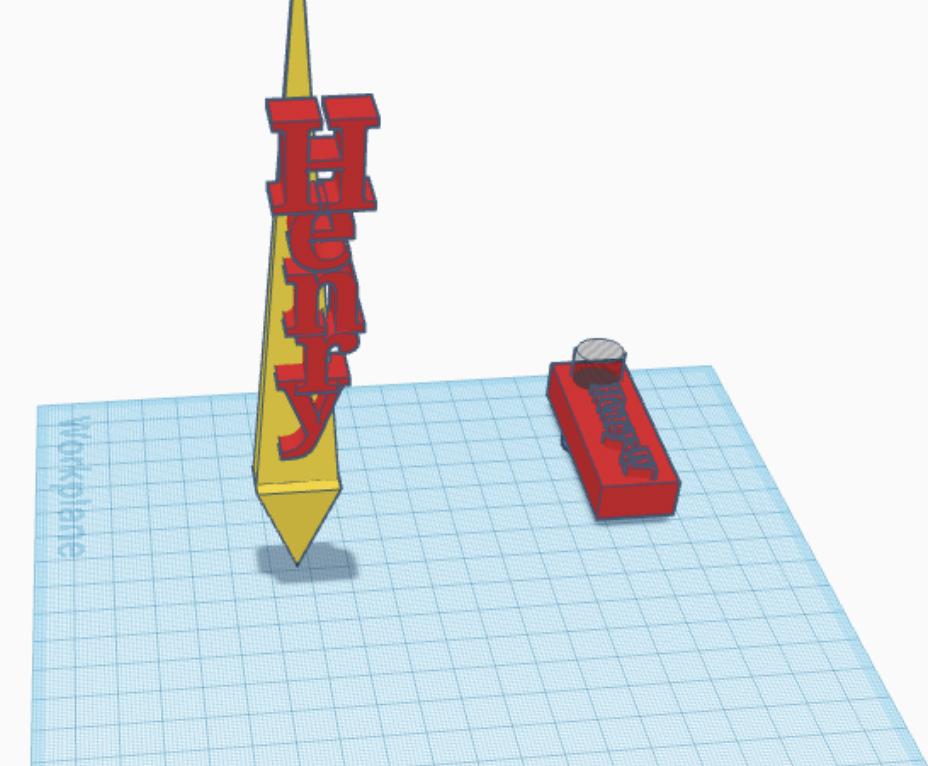

57
The Robotics Room
The Plastic River Challenge
When we do coding or build robots at Addictlab, we implement ‘coding for good’, a way to teach robotics, but with an SDG scenario.


The challenge
There is plastic in the river. Create a device that leaves its base, moves to the plastic, and brings it to the right spot in the recycling area.
Why
This project allows for a mix of creative disciplines needed to solve the challenge

1. collaboration, as students need to work together.
2. ideation & sketching. Draw your device and the functions you want it to have.
3. building. Use the Microbit or Lego Spike boxes to build your device.
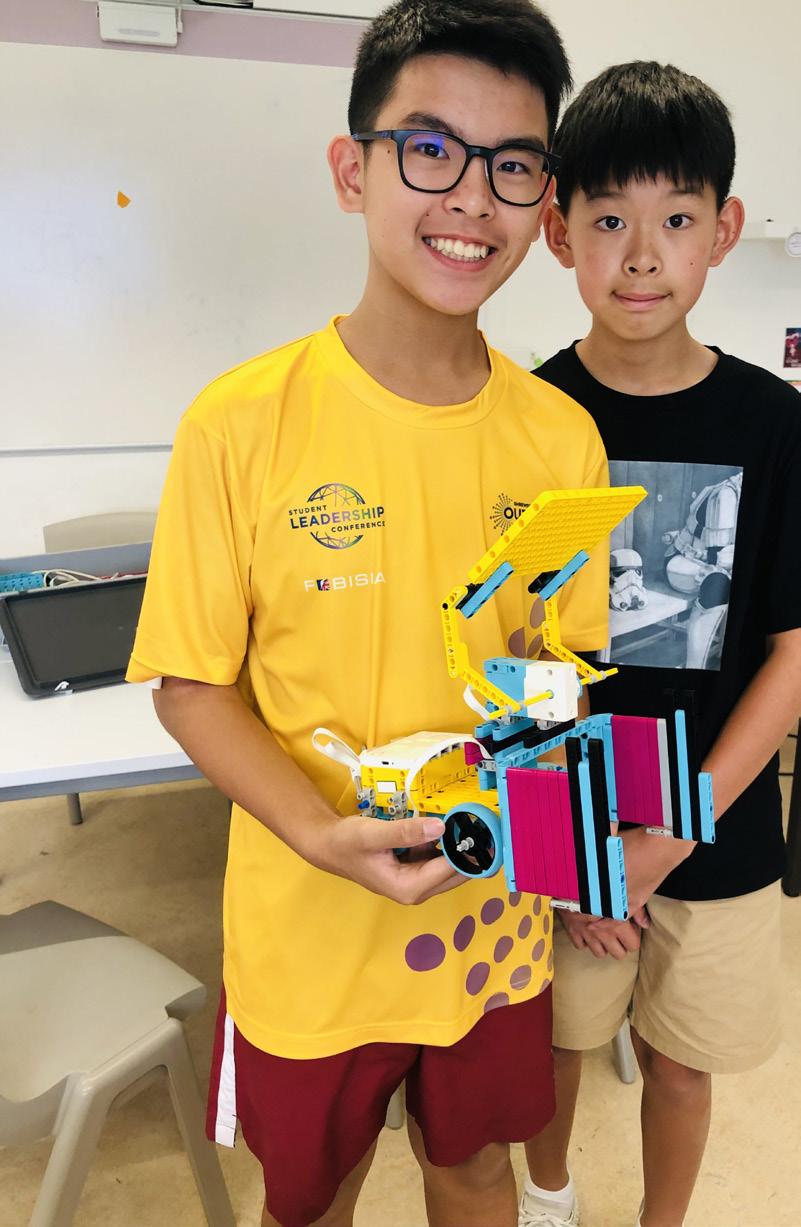
4. coding. Now we can code using python or scratch based programming.
5. testing. The moment of truth. Will the robot do what your team wanted? Do you need to adapt the design or the coding, or both?
SDG ZINE 58
SDGZINE STEAM CORRIDOR ART ROOM -1 #07 LAB N #06/ MAKER SPACE M #01 / ART ROOM A 3 #03 VR ROOM V #04 / ROBOTICS R #05/ CODING C LEVEL 1 LANGUAGE CORRIDOR LEVEL 1 A #02/ 3D PRINTING 3 #03 / VR ROOM V #04 ROBOTICS 1 R C SDGZINE LEVEL 0 LEVEL 3 S #09 COMPUTING G #06/ MAKER SPACE M #07 LAB N #08 WASTE LAB S G



















59 GENE VA lopment Goal TSINGHUA INITIATIVE partners SDG Solution Spac contact info@sdgzine.org www.sdgzine.org LAB.002 sàrl omslag.indd 1 11.03.21 13:15

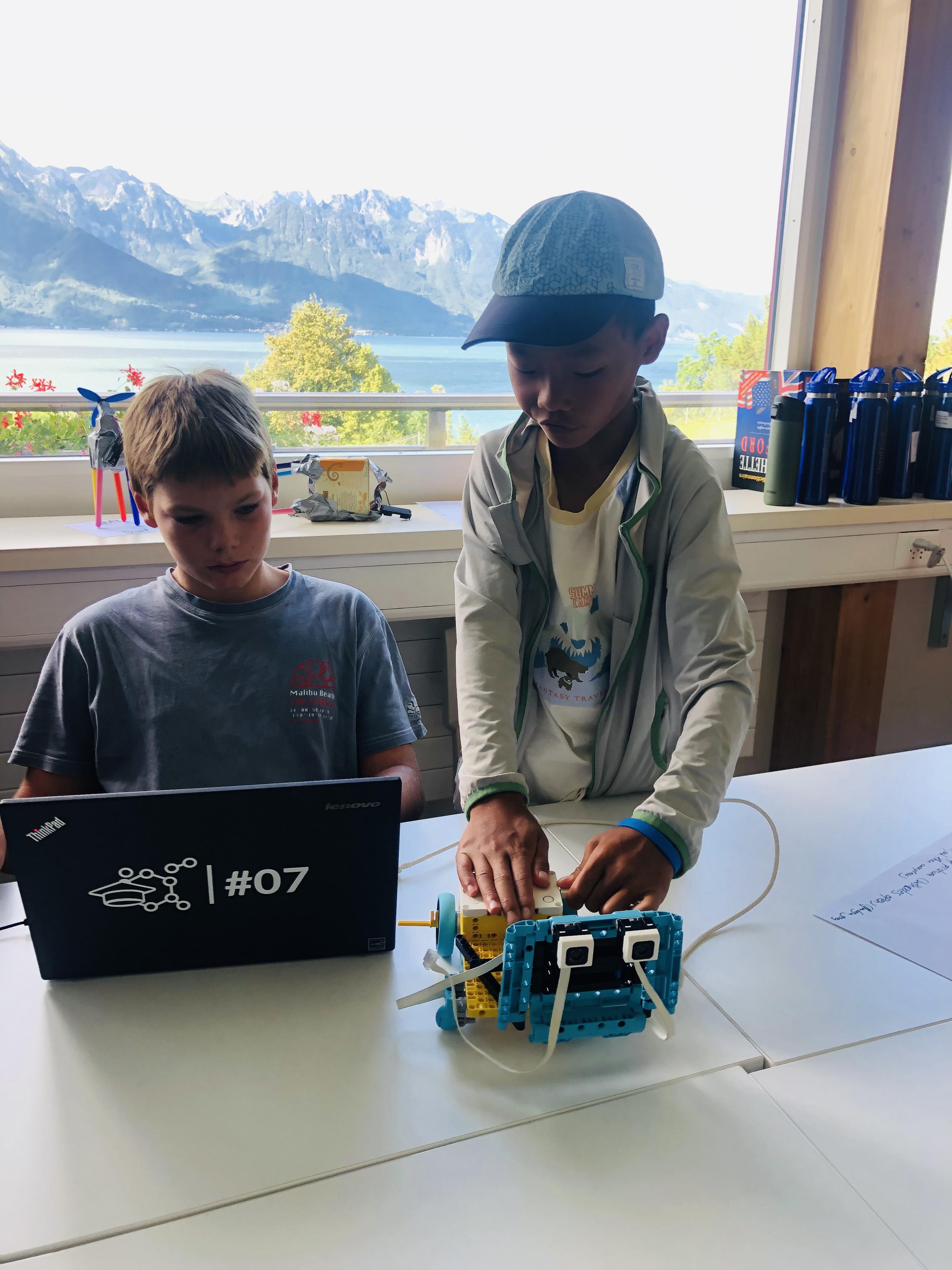
SDG ZINE 60



61
coding for good.


ZINE 62

Coding for fun


Mini golf will never be the same. Addictlab uses robots that look like golf balls to introduce coding to young ones.


SDG ZINE 64
vinyl cutting to make DIY stickers or T shirts

65
Drawing in the 21st century: VR & AI


We want to show and teach old drawing techniques, but also new ones, such as Virtual Reality, the metaverse or AI.



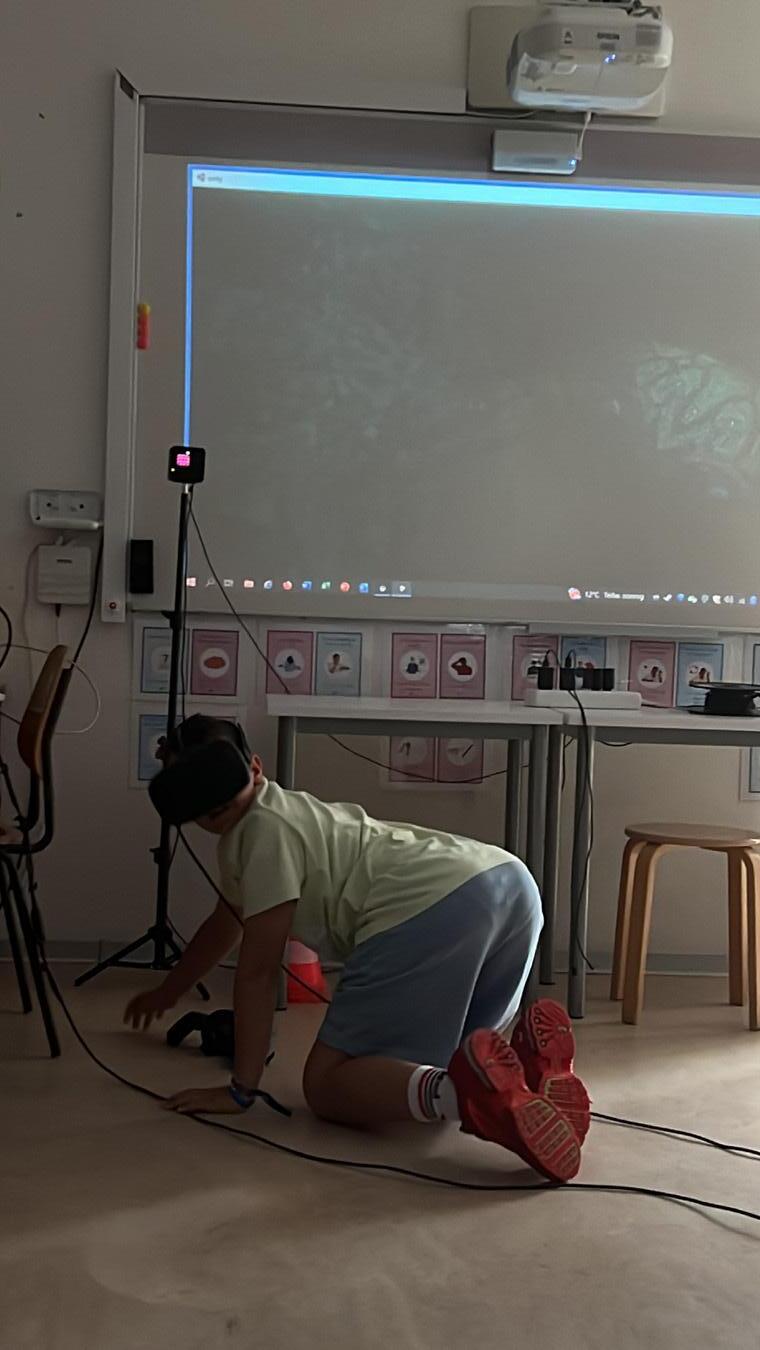
Virtual Reality (VR) brings the immersive and educational experience for diversified age groups of students. The concept of "experience", raise the spatial awareness and exercise the cognitive skills of students, under the moderation on appropriate content to ensure the positive and safe VR experience. As they navigate and interact the 3D environment, students develop spatial awareness, simulate creativity, and explore the different geographic or cultural scenarios, even in the space or under the deep sea!
Very young talent experiencing the VR on the Sunday Welcome Day
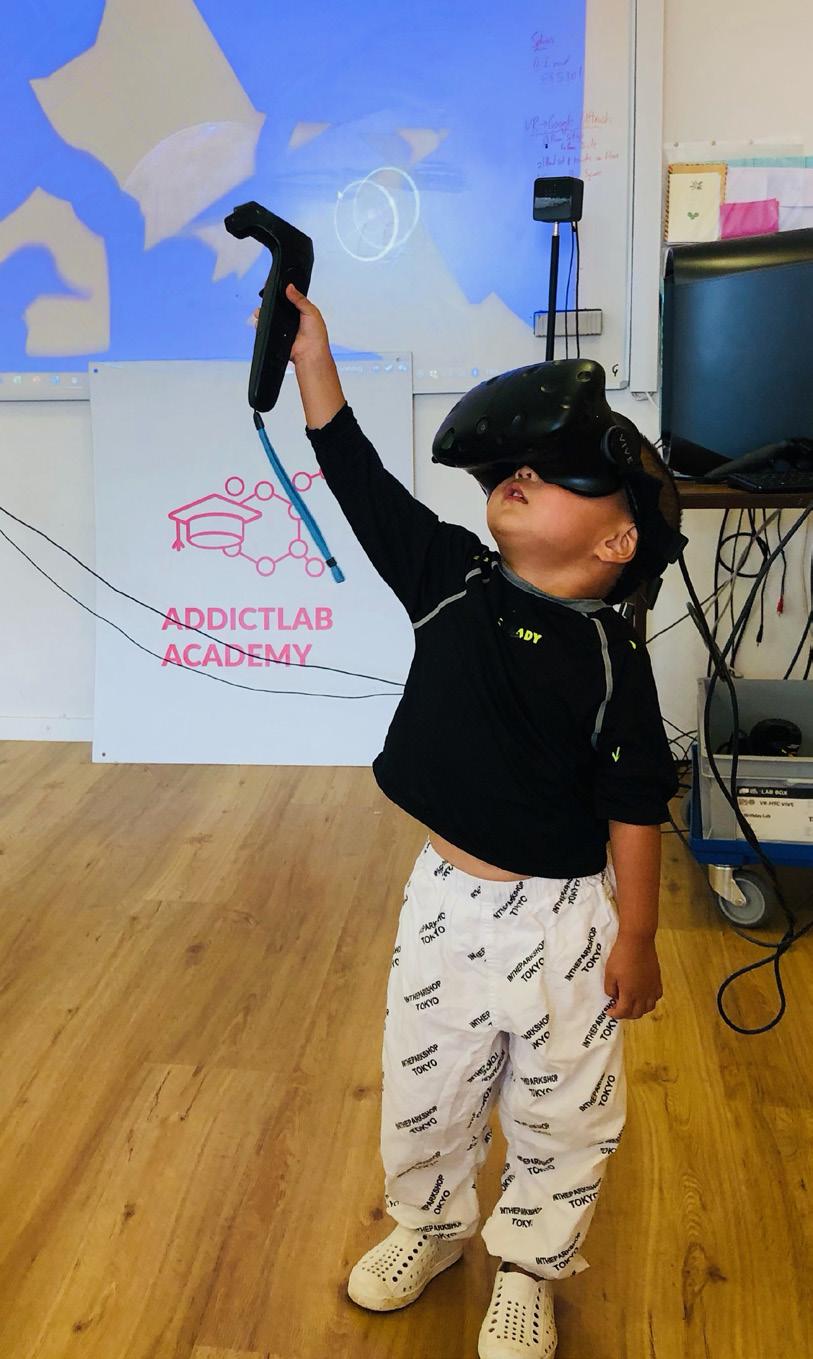
SDG ZINE 66

67
The Waste Lab
Learning About the Sustainable Development Goals
The 2030 Agenda for Sustainable Development, adopted by all United Nations Member States in 2015, provides a shared blueprint for peace and prosperity for people and the planet, now and into the future.

At its heart are the 17 Sustainable Development Goals (SDGs), which are an urgent call for action by all countries - developed and developing - in a global partnership. They recognize that ending poverty and other deprivations must go hand-in-hand with strategies that improve health and education, reduce inequality, and spur economic growth – all while tackling climate change and working to preserve our oceans and forests.
Addictlab is managing the SDG Fablab, at the SDG Solution Space in collaboration with the University of Geneva, and the academy has taken on the SDGs as main navigation through its educational model.



At the St George’s Summer Camp, all students are learning about the SDGs through a fun tik tok like quiz (also available in this magazine).
This introduction to the Sustainable Development Goals serves as a briefing for their Stop Motion Movie making or for coding a SDG related video game.
SDG ZINE 68
SDGZINE LEVEL -1 GROUND LEVEL ART ROOM -1 N M #01 ART ROOM A #02/ 3D PRINTING 3 V #04 / ROBOTICS R C LANGUAGE CORRIDOR LEVEL LEVEL 1 LEVEL 2 #01 ART ROOM A #02/ 3D PRINTING 3 V #04 ROBOTICS 1 R #05 CODING C SDGZINE LEVEL LEVEL -1 #08 WASTE LAB S #09 COMPUTING G #06/ MAKER SPACE M N S #09 COMPUTING G
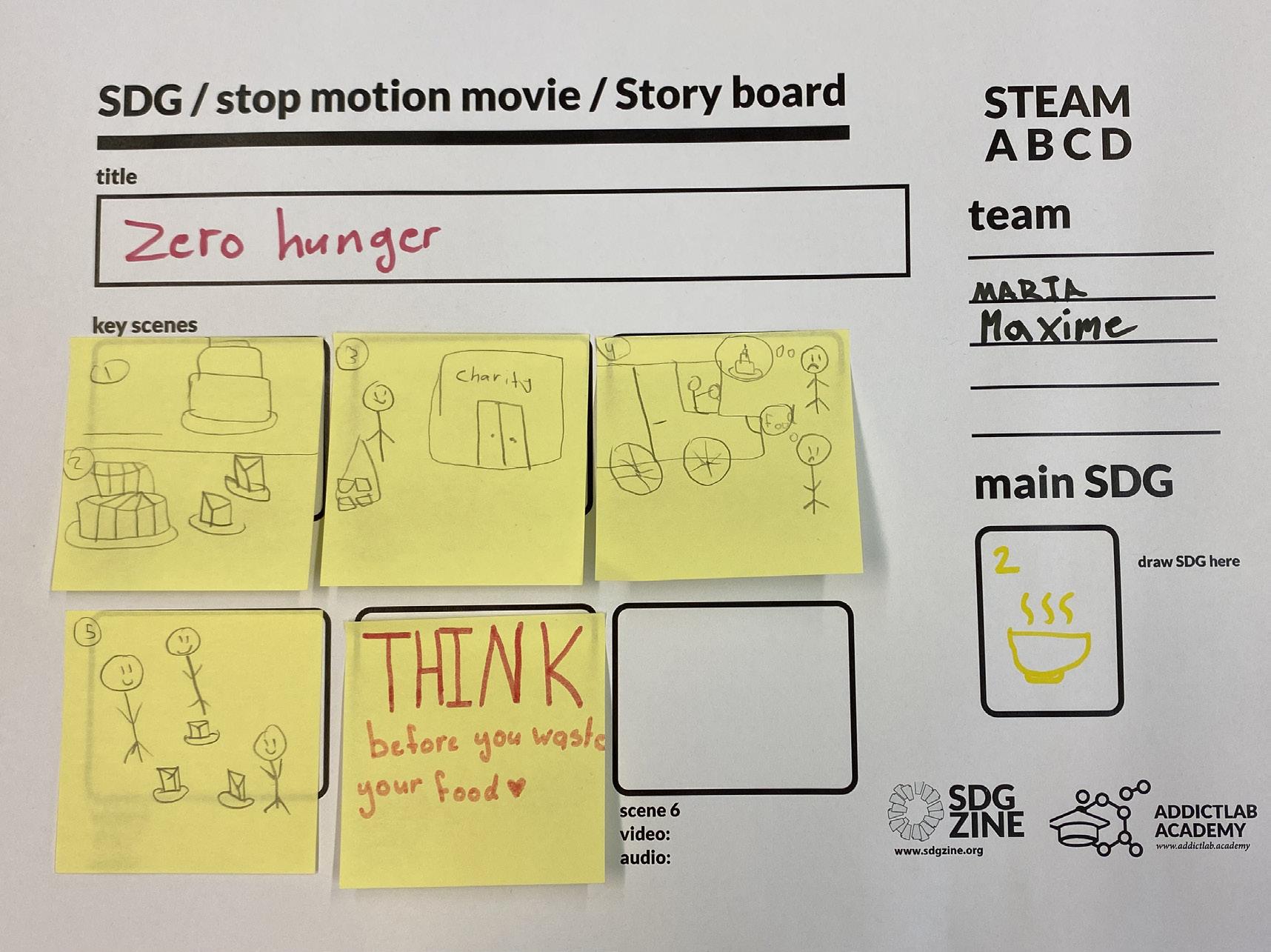



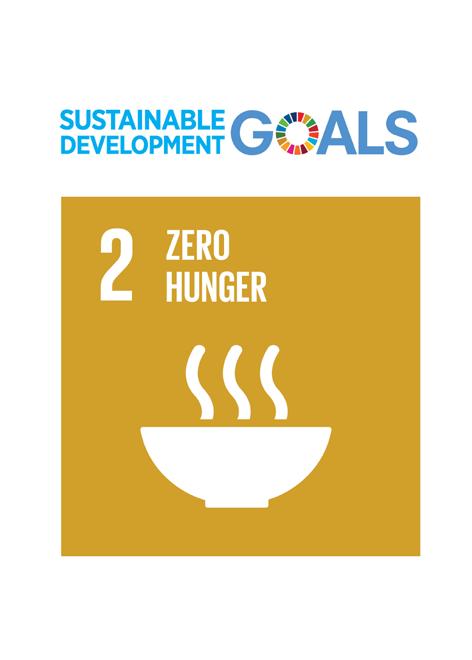
69



SDG ZINE 70 Stop Motion is a very interesting educational acticity. Here is why. 1. collaboration: learn to work together 2. story board: learn to write a story board. 3. character design 4. decor & back drop creation of the back drop 5. the filming: and action 6. editing: 7. adding sound 8. adding a title page 9. adding the credits. Who did what? project / Make a Stop Motion Movie on the Sustainable Development Goals. the Waste Lab SDGZINE LEVEL -1 GROUND LEVEL ART ROOM -1 N M #01 ART ROOM A #02/ 3D PRINTING 3 V #04 / ROBOTICS R C LANGUAGE CORRIDOR LEVEL LEVEL 1 LEVEL 2 #01 ART ROOM A #02/ 3D PRINTING 3 V #04 ROBOTICS 1 R #05 CODING C SDGZINE LEVEL LEVEL -1 #08 WASTE LAB S #09 COMPUTING G #06/ MAKER SPACE M N S #09 COMPUTING G SDG / stop motion movie / Story board scene 1 video: audio: title team main SDG key scenes draw SDG here scene 2 video: audio: scene 3 video: audio: scene 4 video: audio: scene 5 video: audio: scene 6 video: audio: A B C D STEAM
And... action!

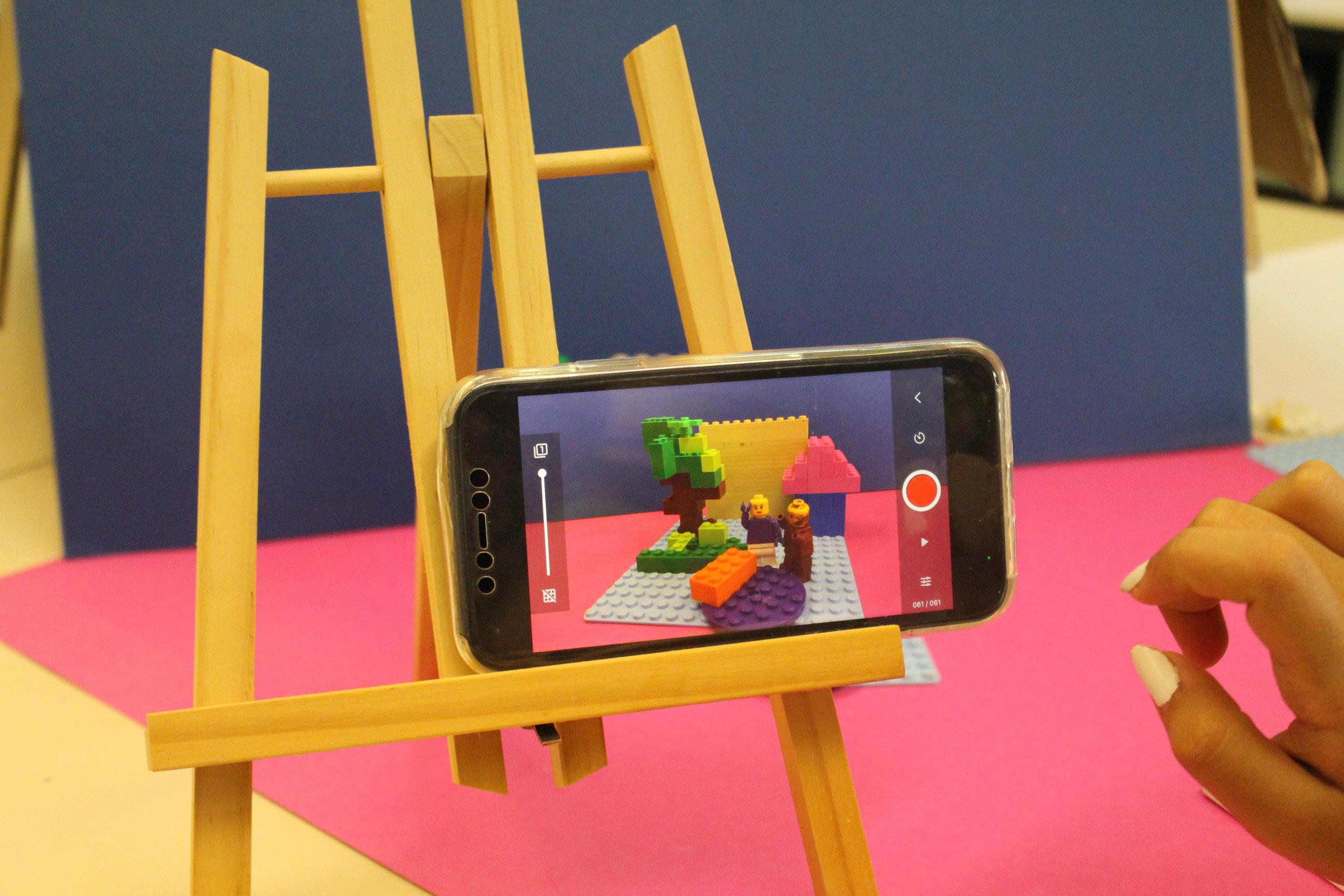
71

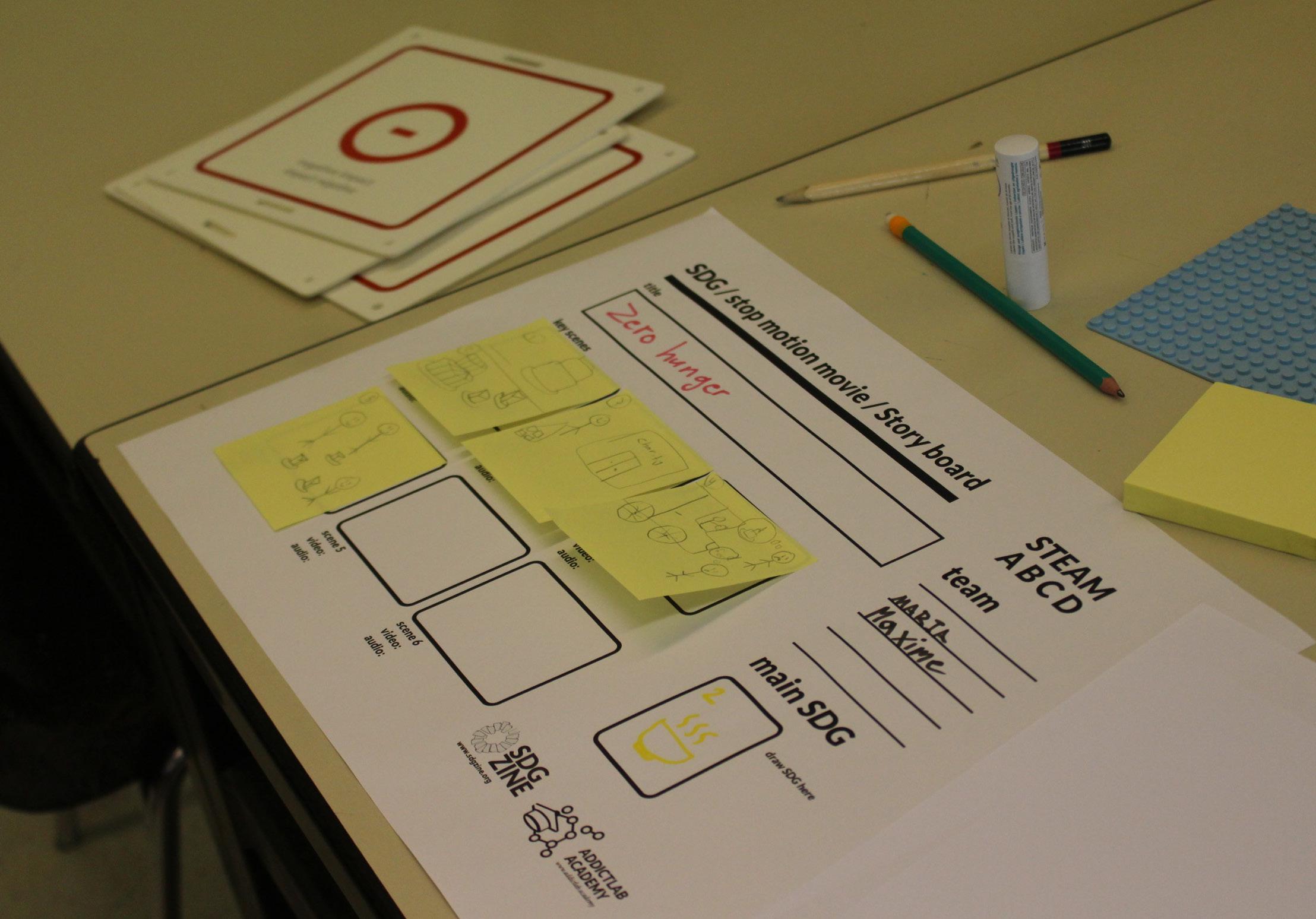

ZINE 72


73
Coding
This session the St George’s Summer Camp proposes a dedicate coding session. Students engage in two weeks of a special coding program.


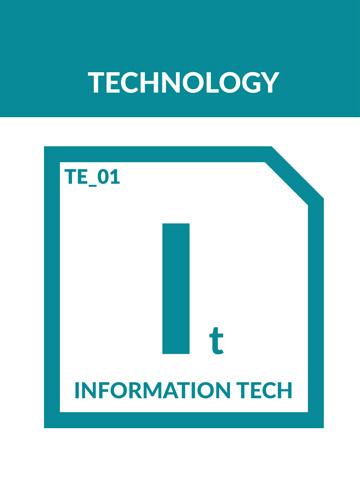

SDG ZINE 74


75
Retro Gaming

The lab boasts state of the art tools and devices, but it is equally important that students have an idea of the past and old techniques.
The first videogames are a fun and important resource to understand the very beginning of the gaming industry, before students take on the challenge of coding their own video games.
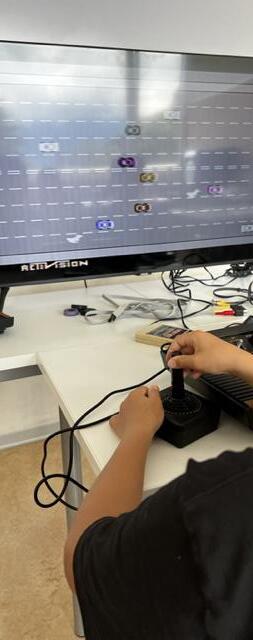

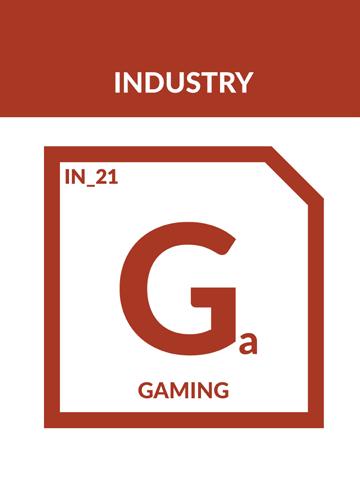

SDG ZINE 76
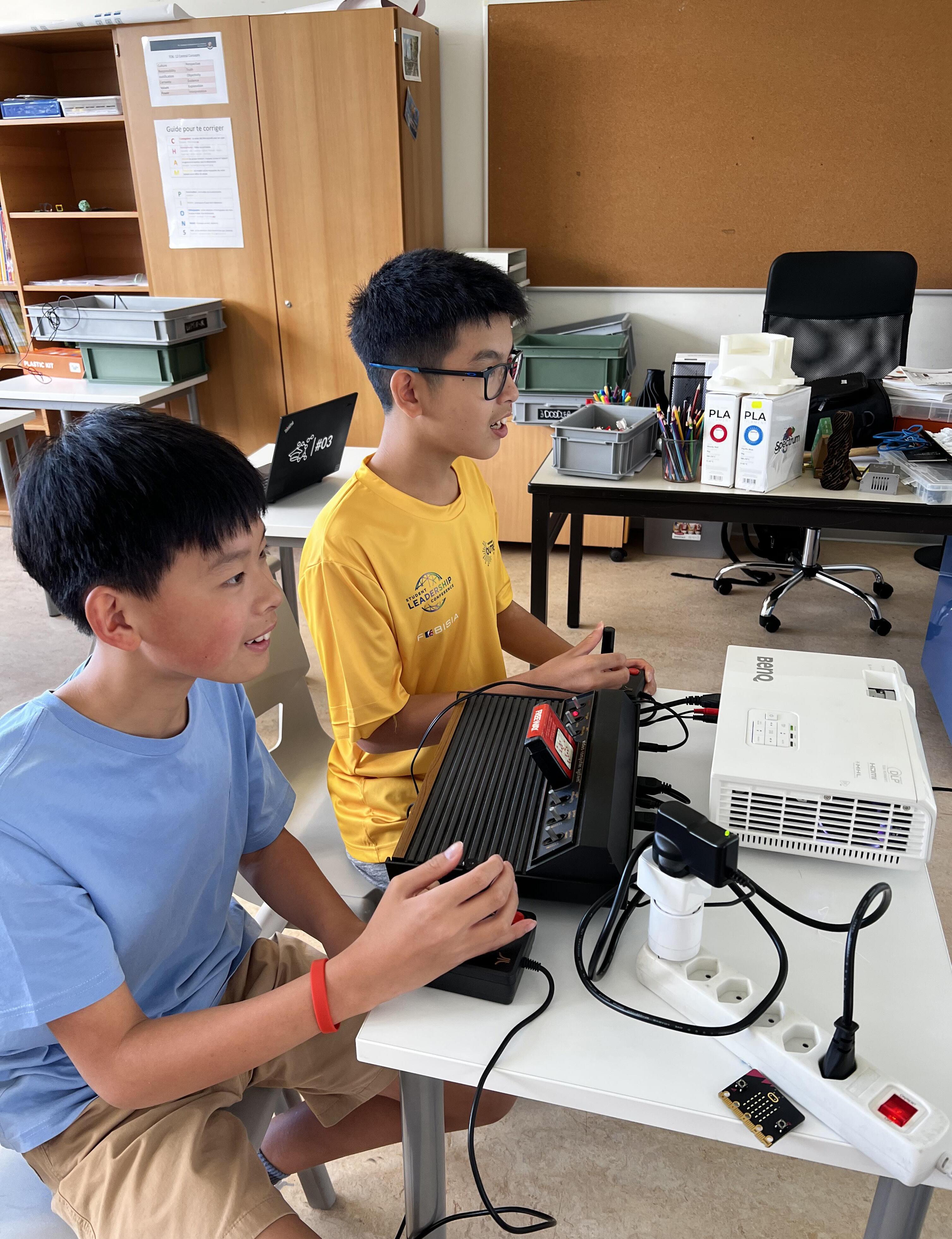
77
PLAY THE SDG QUIZ

Addictlab’s partner Dorier, audiovisual experience designers from Geneva, has been creating this SDG Tiktok quiz for an ambitious event at Palexpo.
Addictlab had a mandate to teach about the SDGS in 17 publics schools in Geneva. Next we asked kids to give us ideas on their future, in line with the SDGs. You can read about this project in SDGzine03 on Good Health and Well-being.
How many answers did you have? This quiz will also be available on the www.sdgzine.org website.
What percentage of the global population needs to survive with 1,9$/day?


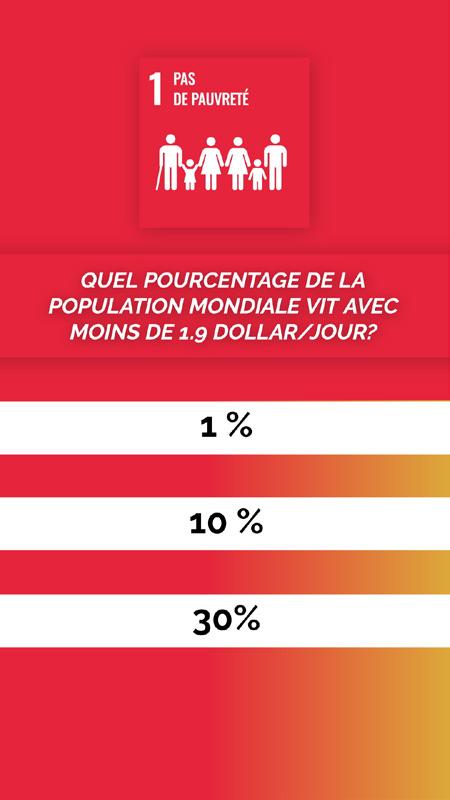
Cattle needs to be fed 8kg in order to produce 1kg of meat. How much do insects need to produce the same amount?


What is the life expectancy in developing countries?

In developing countries, what percentage of children go to elementary school?
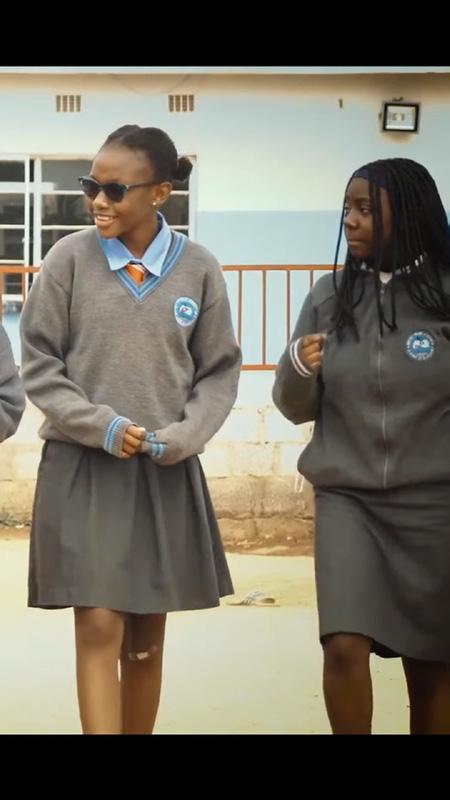
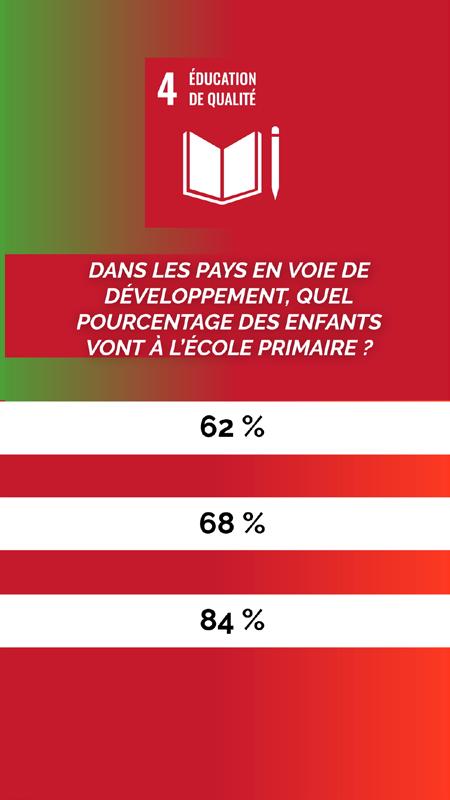
How many women are afraid to speak out and don’t ask for help after being victim of an assault?
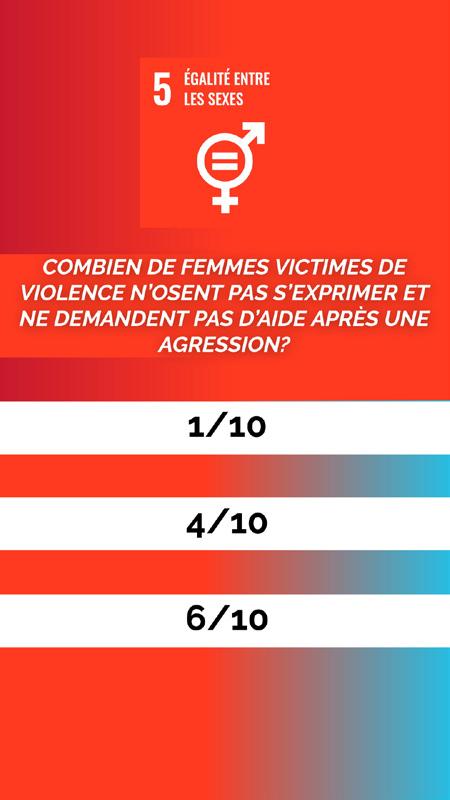
How many people do not have access to drinking water?


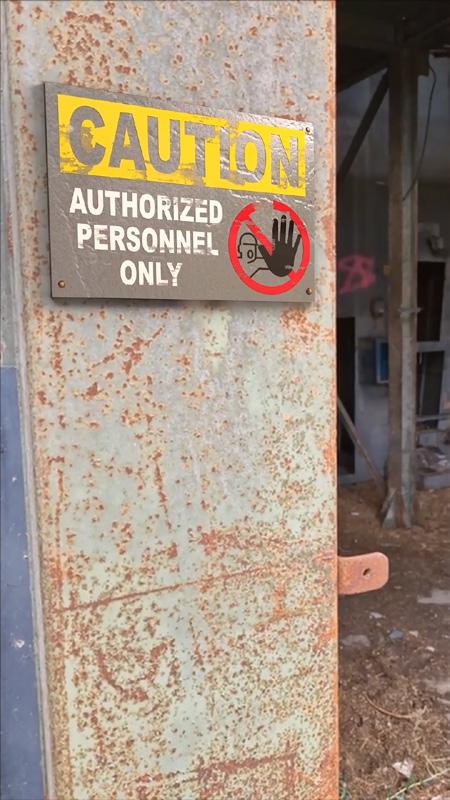
Since 1980, cost of solar panel produced electricity decreased by …?



Sustained and shared economic growth can bring progress and …? Create decent jobs / Improve standard of living / Both


What percentage of the global population used internet in 2021?



Among the 195 UN members, how many pledged to create laws against racism?

Cities are accountable for about 70% of worldwide pollution. Where is does the majority of people live? In big cities / Outside of big cities / Around the same
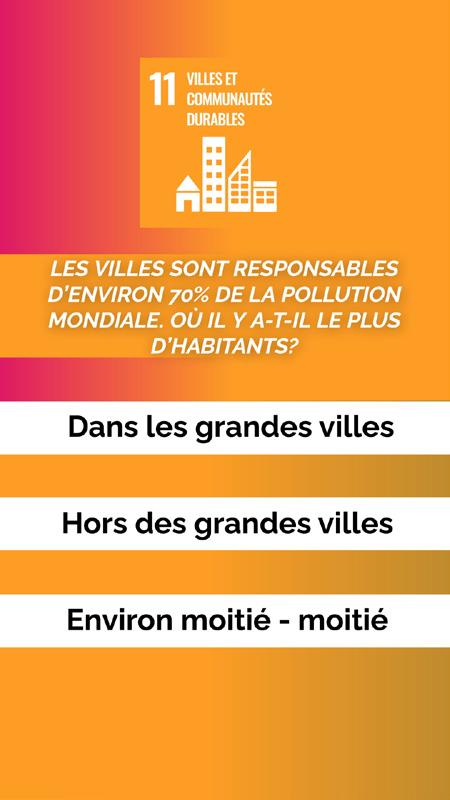
How much of the global food production is wasted?
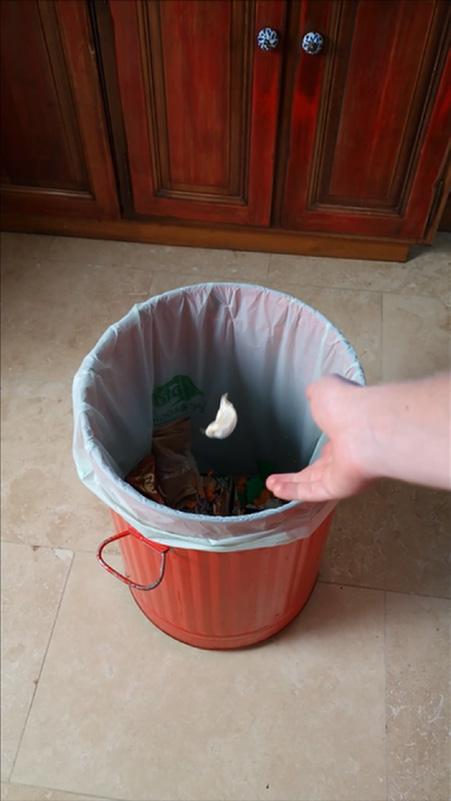

Since 1979, pack ice melting surface is the same as … football fields?
Since 2016, the amount of protected marine areas has...? Decreased by 75% / Stayed the same / Increased by 75%

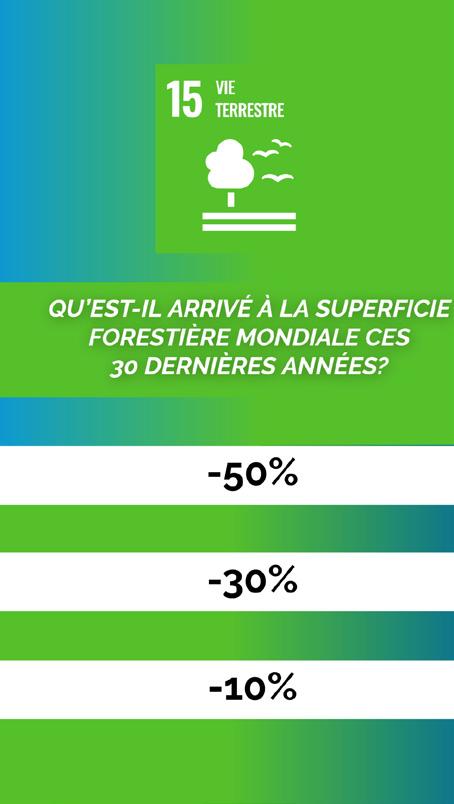

What has happened to the total forest area in the world over the last 30 years?


How much of the world’s migrants are refugees?

PLAY THE SDG QUIZ
Which partners does the UN need in order to achieve its sustainable development goals? Governments / Private companies / Both
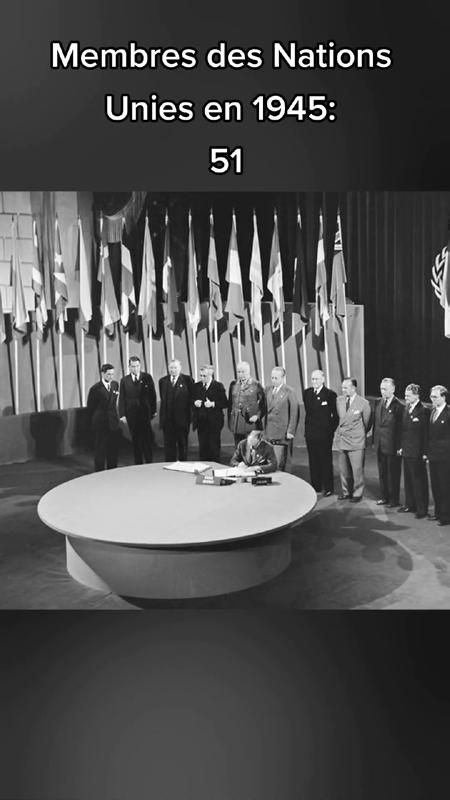

1B - 2A - 3C - 4B - 5C - 6A7C - 8C - 9A - 10C - 11C- 12C -13B -14C -15C - 16A -17C


English Language / contribution
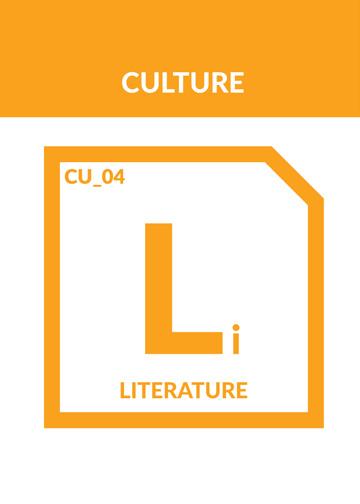

Matt Prior
Matt’s from England but lives in Greece, where he’s a teacher and teacher trainer. Incredibly, this will be his tenth summer at St. George’s, so alongside his football boots and running shoes, he brings a wealth of experience. If you’ve a question about the language programme, Matt has the answer.
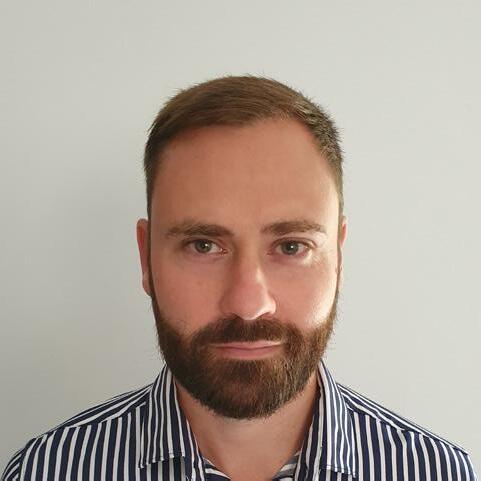
SDG ZINE 82
St George’s Scary Story Competition Winner
*The Revenge of Mr. Matt*
by Kaan
Mr. Matt was bored. He had been doing the same thing for five weeks. He didn’t feel important in the summer camp and wanted to be the director. He decided to find Mr. Duncan.
Mr. Duncan was getting the Juniors ready to sleep. Although it was Saturday, Mr. Duncan had to work. He was going to take Sunday off. ‘Just one more night,’ he thought.
He finally turned off the lights. The school was half-empty because the Seniors were on a mountain trip. Mr. Duncan went to bed and closed his eyes.
He suddenly woke up to the sound of footsteps. He was confused and scared. He heard the fingerprint machine beep and the door open. ‘Who’s there?’ Mr. Duncan shouted. Then all the lights turned on and Mr. Duncan saw a blue pen in a man’s hands.
Mr. Matt was happy now. Mr. Duncan had ‘disappeared’ and Mr. Matt was promoted to the head of the summer camp.
‘Excuse me, Mr Matt, this blue pen dropped from your backpack,’ said a student. Mr. Matt thanked him, quickly put the pen in his pocket and walked away.
83 drones
*
french Language / contribution

Fabrice Lasserre
Bonjour ! Je m’appelle Fabrice Lasserre.
Hello everybody ! I’m Fabrice Lasserre. I have a dual nationality : French and Swiss. Currently I live and work in France, precisely close to the Rhône Valley in the South East of France – at the doors of the Provence area. I teach French and English in quite a renowned Hotel & Catering School located right in the middle of some famous vineyards (does anybody know
about the Hermitage vineyards?!). I also have my own small company for French, French as a Foreign Language, and English Tuition (private lessons at home, on line + running my own Camps all year long).
I’ve come to work at Saint George’s Summer Camp almost every summer since 2016. It’s a wonderful place here and I wish I could go back to childhood and take part in the Summer Camp as a camper !
I have three big children, two sons and one daughter (students at University) and I actually love travelling and discovering new spectacular landscapes, and meeting people from all over the world – therefore I find the summer camp here in Montreux wonderful and ideal in terms of « culture meeting & blending ».
I run a lot, achieving a certain number of marathons (my personal best being London 2006, just below 3 hours!). I also practise judo, golf, hiking,
cycling, skiing... British Literature is my favourite, and I would simply love it if our amazing planet was more peaceful and people more respectful of their environment !
Let me give you my favourite quotation to finish : « A thing of Beauty is a Joy forever » ! (John Keats)

SDG ZINE 84
Lara
Bonjour, je m’appelle Lara. Je suis Saoudienne mais j’habite à Londres depuis huit ans maintenant ! J’adore cuisiner mais je ne cuisine pas souvent. J’ai trois grandes sœurs. Et je déteste les ...oignons ! En classe de Français avec « Monsieur Fabrice », on a vu un film qui s’appelle « L’Incroyable Histoire du Facteur Cheval ». J’ai bien aimé ce film parce que je l’ai trouvé très intéressant : c’est un biopic, donc c’est encore plus dramatique et émouvant ! L’histoire est étonnante mais triste aussi. Cependant je l’ai trouvé agréable à regarder ! J’aimerais aller visiter le vrai Palais construit par le Facteur Cheval. Au revoir !
(Hello, my name’s Lara!
I’m from Saudi Arabia but I’ve been living in London for eight years now ! I love cooking but I don’t often cook. I have three big sisters. And I hate...onions ! In the French class with « Mister Fabrice », we watched a film called « The Incredible Story of Postman Cheval » - « Horse » in French, that’s his name!). I really liked this film as I found it very interesting : it’s a biopic, so it’s all the more dramatic and moving ! The story is amazing but sad too. However I found it pleasant to watch ! I would like to visit the real Palace built by the Postman Cheval. Good bye!)
85
St George’s Scary Story Competition Winner
And more activities....


SDG ZINE 86




87
Becoming a SDG journalist

An extra and exciting part of the Addictlab STEAM program this year is the creation of a special edition of the SDGzine. And this in only two weeks time. Every session will have its own edition. The magazine will be made available online, and there will be an opportunity to order hard copies aswell.
The SDGzine is a magazine concept launched by Addictlab and based on years of experience in magazine making. It aims to showcase and grow an SDGconscious ecosystem with partners, people and projects. Schools, international organisations, companies and students are all welcome to take part, to document what has happened, or to initiate what should happen.
Students of the Summer Camp have volonteered to be part of it. To help document, write, take pictures.
Contact info@sdgzine.org for all questions.
About the SDGzine
SDGS & innovation
• Helping companies and organisations innovate while aligning with the SDGS
• SDG acceleration
• Repository of concepts from the Master program at the SDG Solution Space

• SDGS & Fablabs
• Linking makerspaces and fab labs to the SDGS


SDGS & Education
Create programs for schools to add SDGS to the curriculum
SDGS & art & design
Thought provoking concepts from artists, designers and other creative thinkers
Accelerating talent
Showcasing projects creating sustainable change
Tools & inspiration
Sharing best practices, exhibition concepts & hands-on tools
SDG ZINE 88

89
Ending the camp: pick your badge / diplomas
After two weeks of diverse activities, the camp is coming to to an end.
What did the students learn? What did they discover? What did they like?
They took part in over 30 different activities, from tradional art to state of the art technology. Time for them to contemplate. What badge or diploma do they want?
They can select from the 145 creative disciplines and create their own badge.
With this reward, we have come to a full circle. From the initial profiling, over two weeks of experiments and discoveries, to the badges they earned.

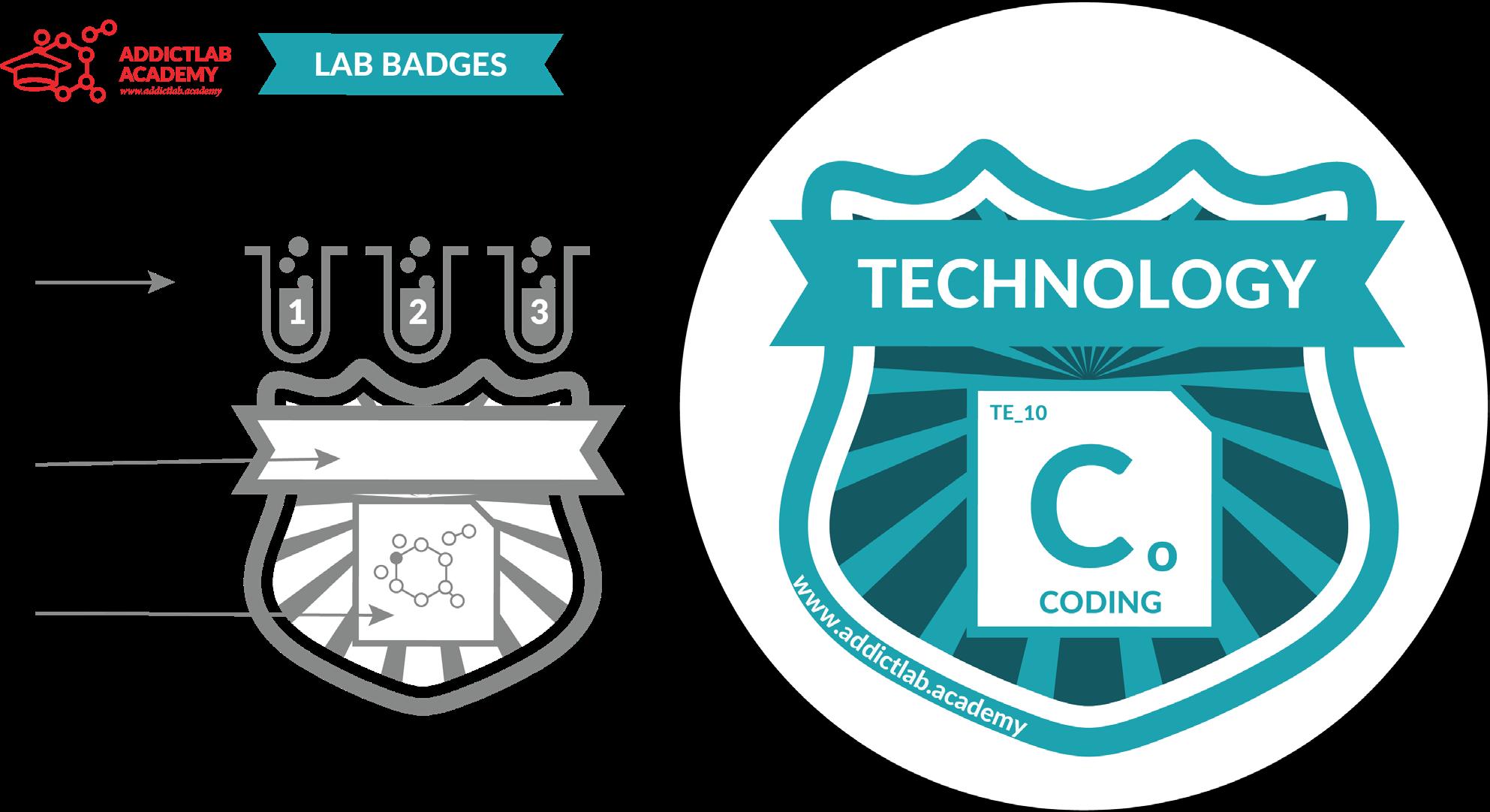
91 NA_03 ENVIRONMENT E nv NATURE wwwaddictlabacademy AA_01 ANIMATION A n APPLIED ARTS TE_08 ROBOTICS R o TECHNOLOGY LAB BADGES wwwaddictlabacademy CO_01 ADVERTISING A d COMMUNICATION wwwaddictlabacademy CT_06 SUST.DEV.GOALS SDG CRITICAL THINKING wwwaddictlabacademy wwwaddictlabacademy TE_02 3D PRINTING 3d TECHNOLOGY Develop a unique mix of skills Earn your lab badges this summer TECHNOLOGY 2 wwwaddictlabacademy BU_04 STRATEGY Str BUSINESS wwwaddictlabacademy DE_02 PRODUCT DESIGN Pd DESIGN wwwaddictlabacademy TE_06 MAKER Ma TECHNOLOGY wwwaddictlabacademy CU_06 PHOTOGRAPHY P h CULTURE wwwaddictlabacademy TE_10 CODING C o TECHNOLOGY wwwaddictlabacademy CT_05 INNOVATION I nn CRITICAL THINKING wwwaddictlabacademy IN_21 GAMING Ga INDUSTRY wwwaddictlabacademy BU_11 CHANGE Ch BUSINESS wwwaddictlabacademy TE_09 VIRTUAL REALITY Vr TECHNOLOGY wwwaddictlabacademy NA_04 RECYCLING R e NATURE wwwaddictlabacademy TE_10 DRONES Dr TECHNOLOGY wwwaddictlabacademy CU_01 ART A r CULTURE wwwaddictlabacademy AA_11 SKETCHING S k APPLIED ARTS wwwaddictlabacademy PS_05 HUMAN RIGHTS Hur PUBLIC SPHERE wwwaddictlabacademy PS_10 SCIENCE Sci PUBLIC SPHERE wwwaddictlabacademy ME_05 MAGAZINES Mg MEDIA wwwaddictlabacademy CT_07 COLLECT INTL C CRITICAL THINKING wwwaddictlabacademy

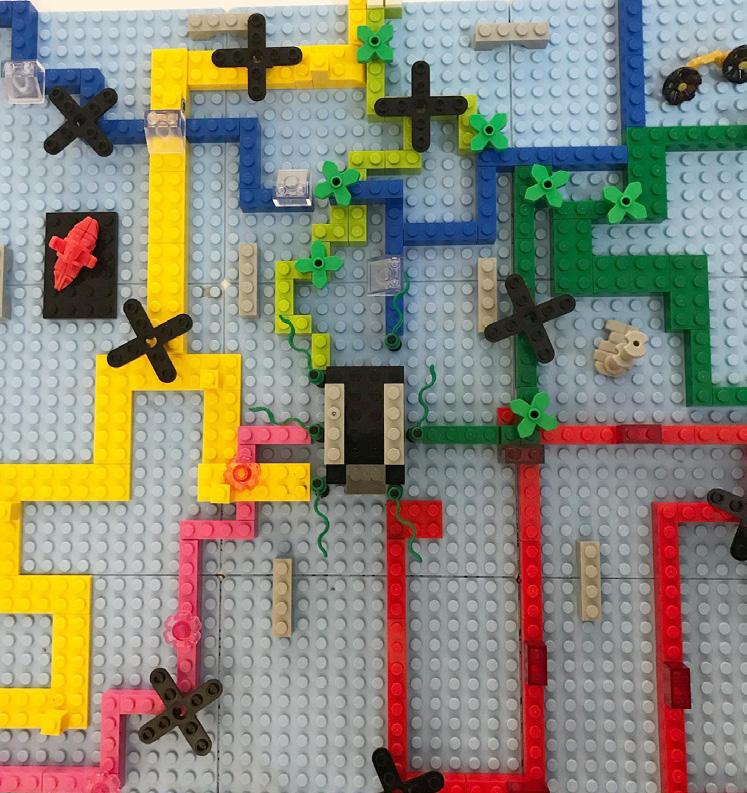

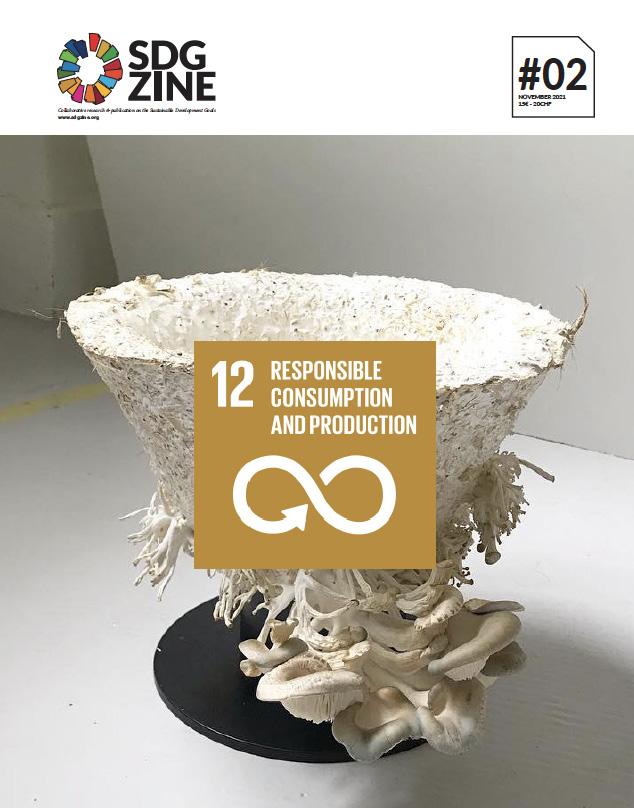

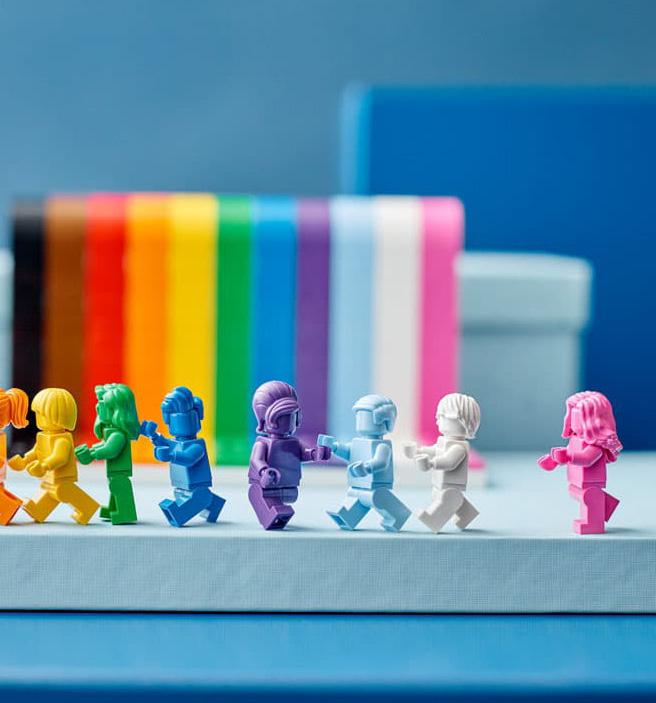

SDG ZINE 92 SDGzine / normal issues collaborative publications & research SDGZINE #01 OUT / PRINT & ONLINE SDGZINE #02 OUT / PRINT & ONLINE Collaborative publication on the sustainable development goals #01 JANUARY 2021
Education Issue SDGZINE #03 THIS ISSUE SDGZINE #04 NEXT ISSUE // CALLING FOR PROJECTS & PARTNERS next issue SDGzine research & outreach project SDGZINE #04 CALLING FOR COLLABORATION & CONTENT Research Research projects and prototyping from the SDG Fab Lab in Geneva SDGs & education Programs for schools to add SDGs to the curriculum International Geneva Best practices from organisations in Geneva www.addictlab.com International creative think tank www.addictlab.academy innovation in education tools & products www.sdgzine.org SDG magazine & workshops
The

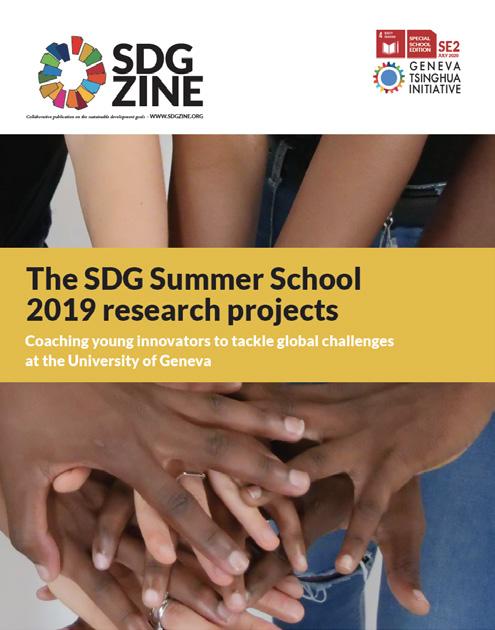










93 INTERNATIONAL SCHOOL OF GENEVA Printed and online GENEVA TSINGHUA INITIATIVE Printed and online schools & organisations: Run your SDG project and create your own SDGzine. Contact us for SDG challenges, lectures and workshops for your organization or school & let’s create your own SDGzine together. info@sdgzine.org GENEVA TSINGHUA INITIATIVE In production SDGzine /special editions one partner projects and documentation your logo your own SDGzine. Contact us for challenges INTERNATIONAL SCHOOL OF GENEVA Printed and online UNIVERSITY OF GENEVA Printed and online UNIVERSITY OF GENEVA Printed and online OPEN GENEVA Printed and online WWW.SDGZINE.ORG SPECIAL SE4 SDG challenges: thinking out of the box International School of Geneva / Years 7-8-9 / 2021 ST GEORGES SUMMER CAMP online www.labfiles.org Repository System for schools, fab labs & makerspaces aligned with the Sustainable Development goals




Would you like to receive a printed copy of the magazine? You can order a printed copy of the SDGzine for the St George’s Summer School - 50CHF Mail info@sdgzine.org for more information or questions.
SDGzine research & outreach project


SDGZINE #04 CALLING FOR PROJECTS & PARTNERS / UPLOAD ON ADDICTLAB.COM
next issue
